Lesley L. Smith – Texas Extreme Precipitation
All plots preliminary.
Right click to see bigger versions.
New Most recent plots first.
re. May 2015 precipitation
How do El Ninos and/or Climate Change affect TX OK precip?
Figures for Cheng et al 2016 paper here
Supplementary Figures


Re. 'model validation'

Re. 'Definition of El Nino'
Re. Step 1:

Re. Step 3: We use each separate 30-year era and normalize by the standard deviation



Standardizing 2050-2080 time series by 1985-2015 standard deviation (notice this case has a mixture of reference periods)

Standardizing 2050-2080 time series by 1985-2015 standard deviation and computing anomalies with respect to 1985-2015

Re. Description of event:


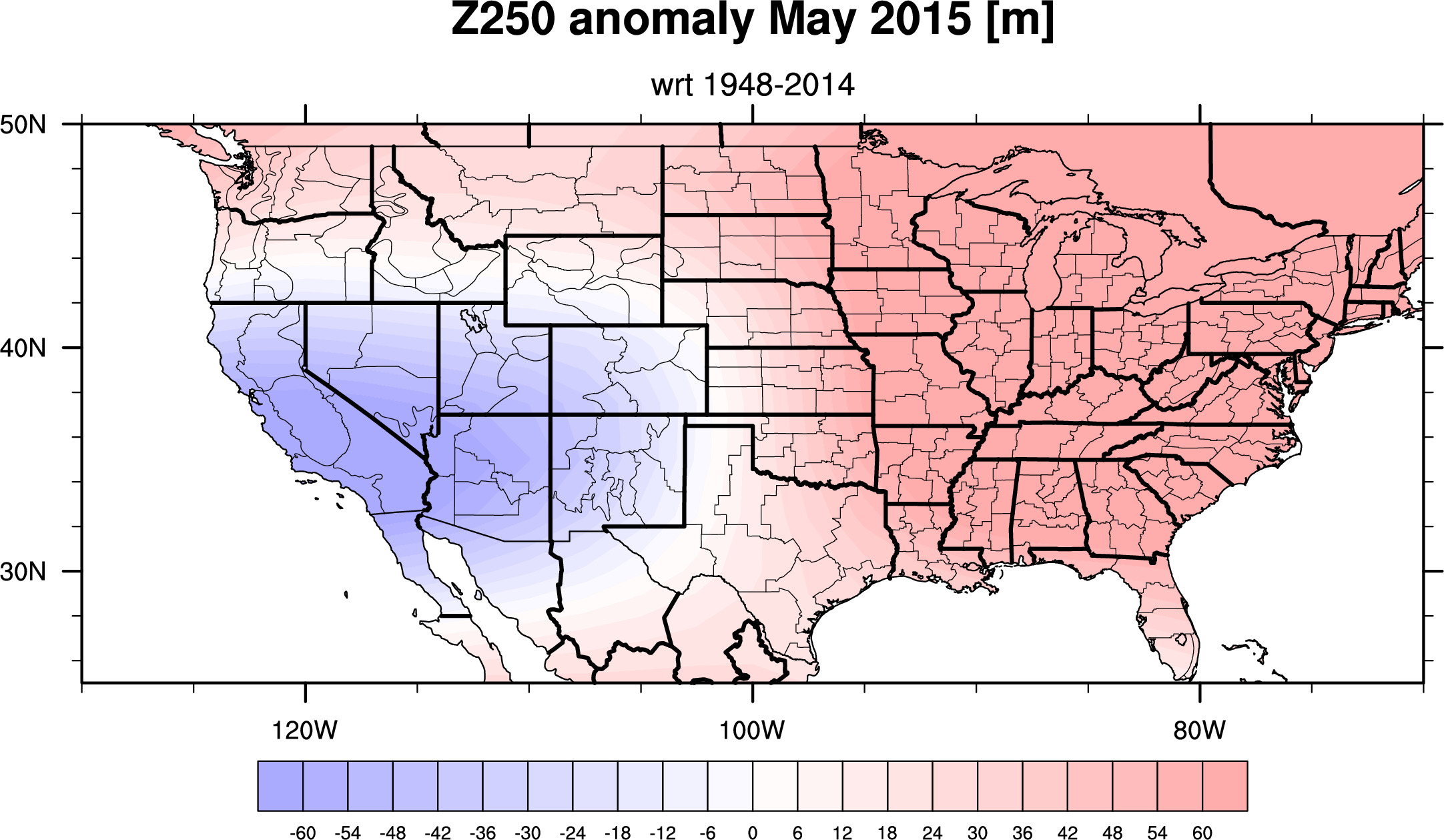


Re. 'Definition of El Nino'
For the CESM1 LENS data, we essentially follow the Climate Prediction Center's definitions of Cold & Warm Episodes by Season (www.cpc.ncep.noaa.gov).
Below plots in this section show sample runs 1 - 5:
Step 1: We use each separate 30-year era and compute ONI:



above units degrees C
Step 2: We use each separate 30-year era and detrend:



above units degrees C
Step 3: We use each separate 30-year era and normalize by the standard deviation



values > 1 are considered El Ninos
-------------------------------------------------------------------------------------------------------------------------------------------
Re. 'Model Validation'
Observations El Nino Mays
For observations, following original CPC convention, Nino3.4 region SST anomalies wrt 1971-2000 and with 3 month running mean,
values > 0.5oC are El Ninos


Model CESM1 LENS El Nino Mays [mm/day] where El Ninos computed as above in model section

----------------------------------------------------------------------------------------------------------------------------------------------------
Observations All Mays

Model CESM1 LENS All Mays
CESM1 data sorted by precipitation in TX and OK
Precipitation
Wettest quintile
TS
Wettest quintile:
Z250
Wettest quintile:
--------------------------------------
--------------------------------------
For the TX/OK area Strong May El Ninos
All months
Mays only
--------------------------------------------------------------------------------------------------------
Ensemble averages:
Individual runs here
Not detrended and standardized:
detrended and standardized:
GPCP Precip
Climate Division Precip
NCEP Reanalysis:
NCEP Reanalysis:
Comparing temporal periods here
ENSO plots here
---------------------------------------------------------------------------------------------
---------------------------------------------------------------------------------------
--------------------
Climatologies
---------------------------------------------------------------------------------------
--------------------
Climate Division Data:
Model Data:
---------------------------------------------------------------------------------------
--------------------
--------------------------------------------------------------------------------------
---------------------------
---------------------------
---------------------------
---------------------------------
------------------------------------------------------------------------------------------------------------
regarding observational data variability:
regarding model variability:
observational and model data:
Long-term model runs:
GFS and GPCC:
CAM4 and GFS-polar:
---------------------------------------------------------------------------------------
---------------------
large model ensembles:
GFS and GPCC:
CAM4 and GPCC:
Comparing anomalies of ensemble means:
---------------------------------------------------------------------------------------
---------------------
GFS Model:
GFS "fix arctic" Model:
CAM4 fully forced AMIP Model:
---------------------------------------------------------------------------------------
---------------------
Regressions:
GFS Model:
1901-2014 monthly climatology:
1979-2014 monthly climatology:


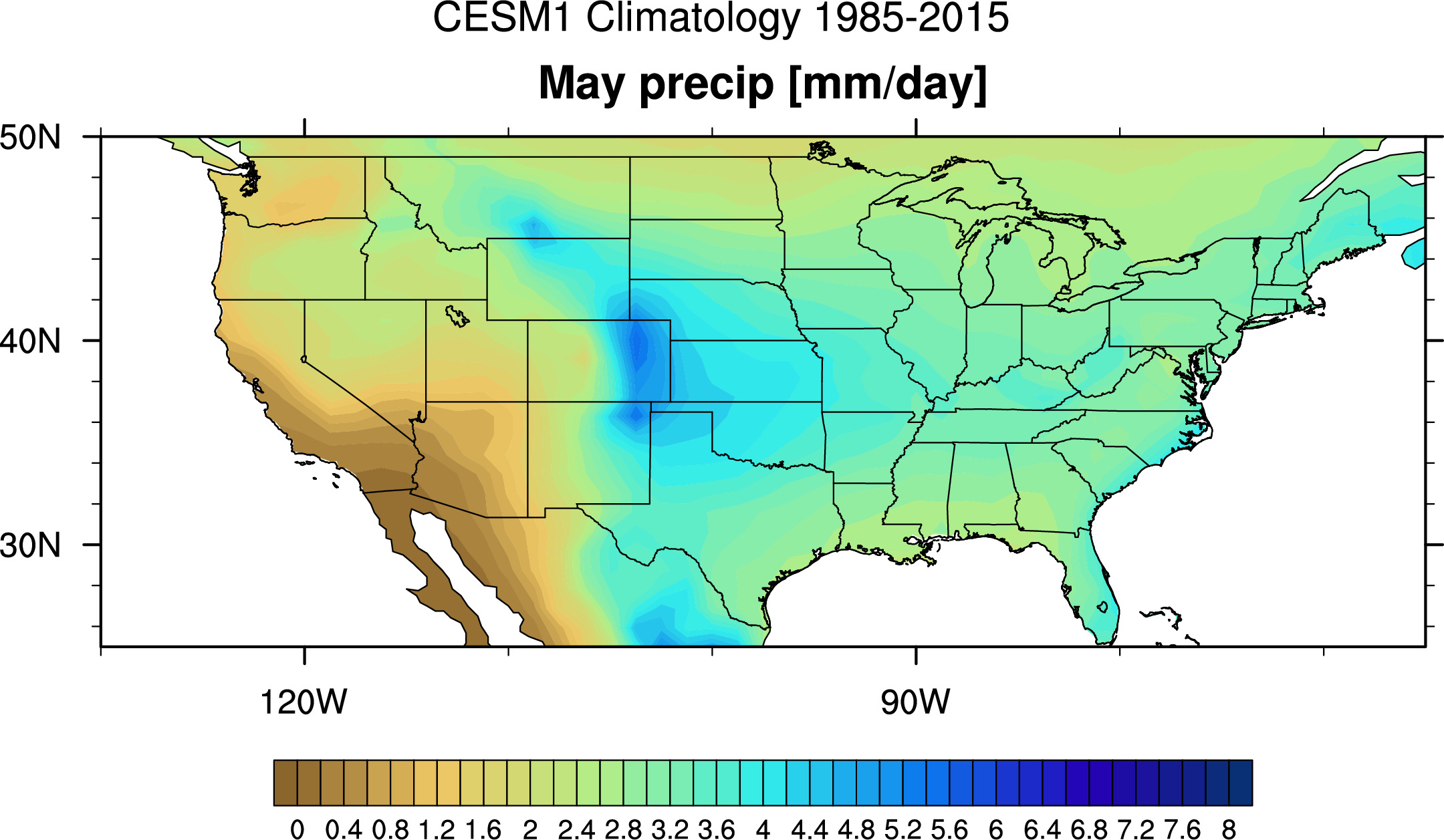

----------------------------------------------------------------------------------------------------------------------------------------------------
time series of various CESM1 ensemble means



----------------------------------------------------------------------------------------------------------------------------------------------------

--------------------------
Wettest runs:









Wettest runs:






Wettest runs:





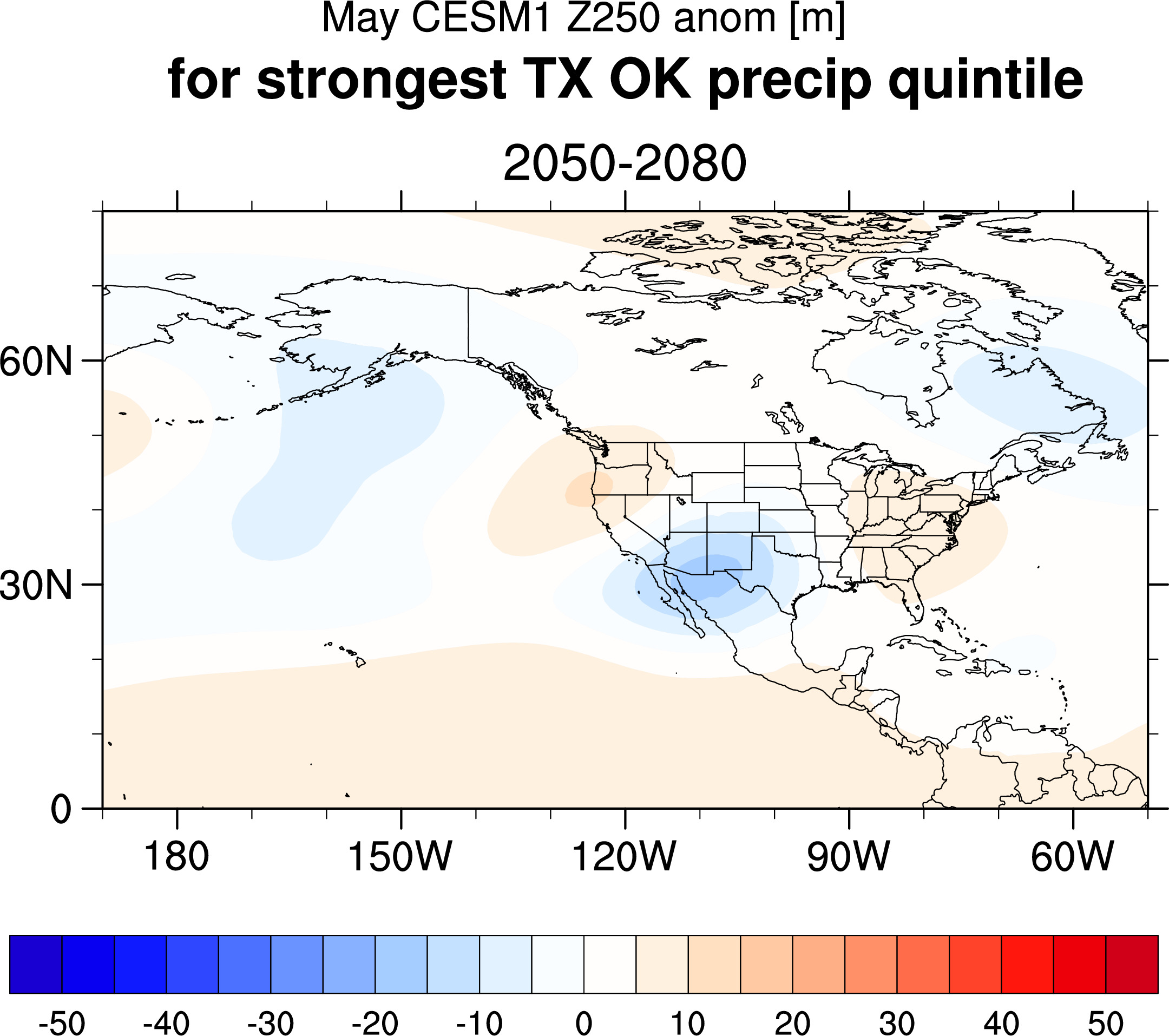



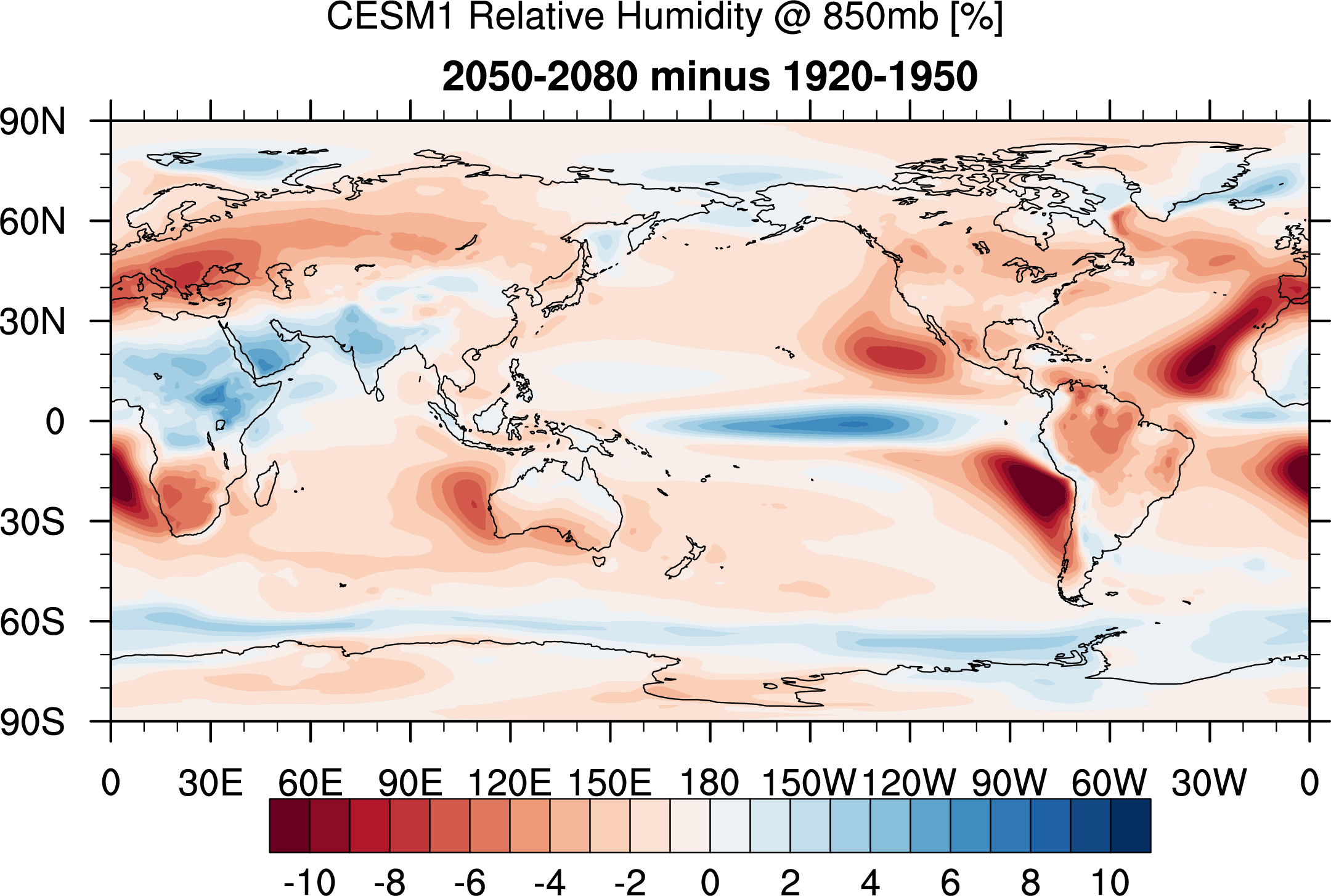



below precip units are mm/day and precipitable water units are kg/m2
digital numbers under titles are the slopes of the best fit lines

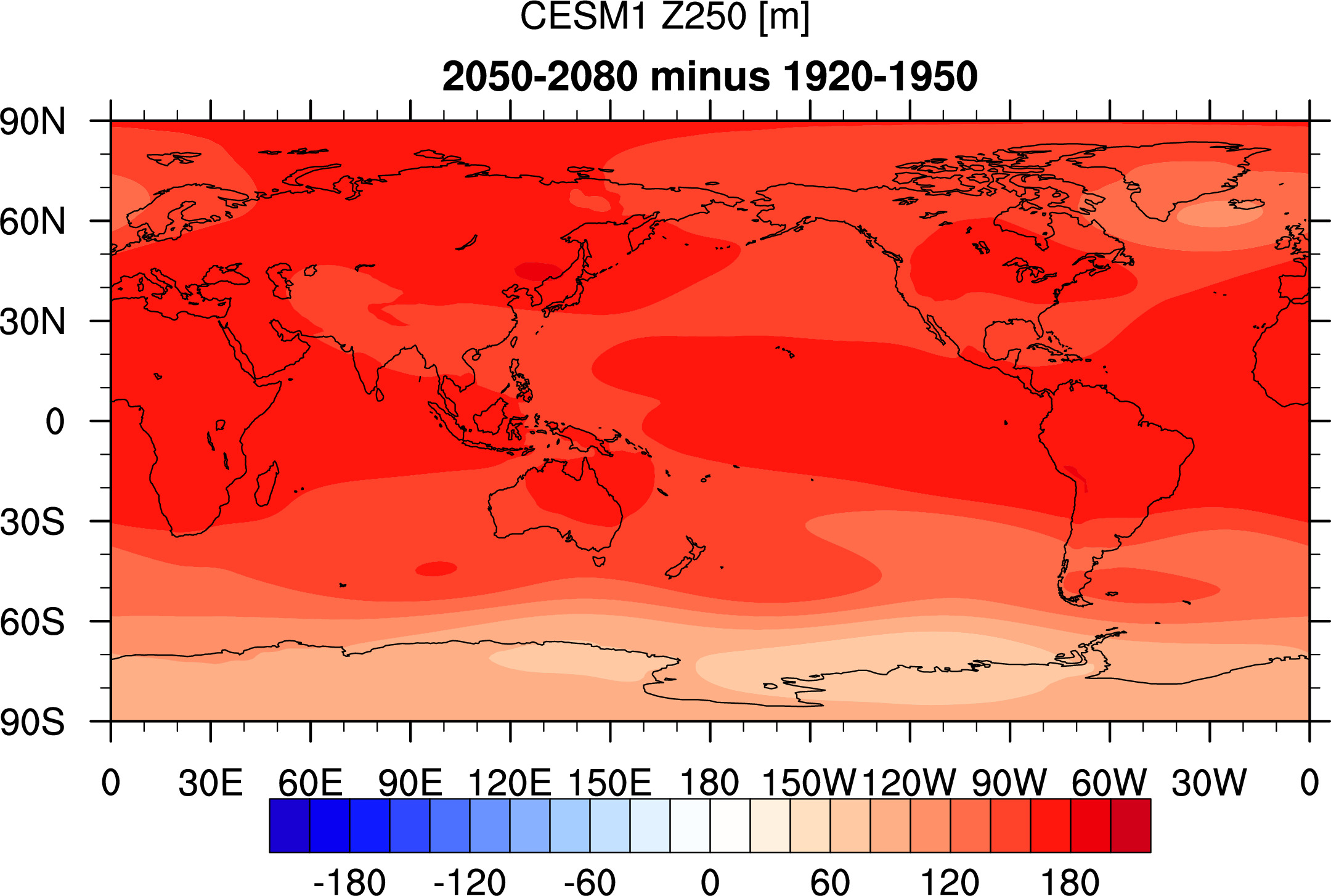











------------------------


Trends in CESM Precipitation:

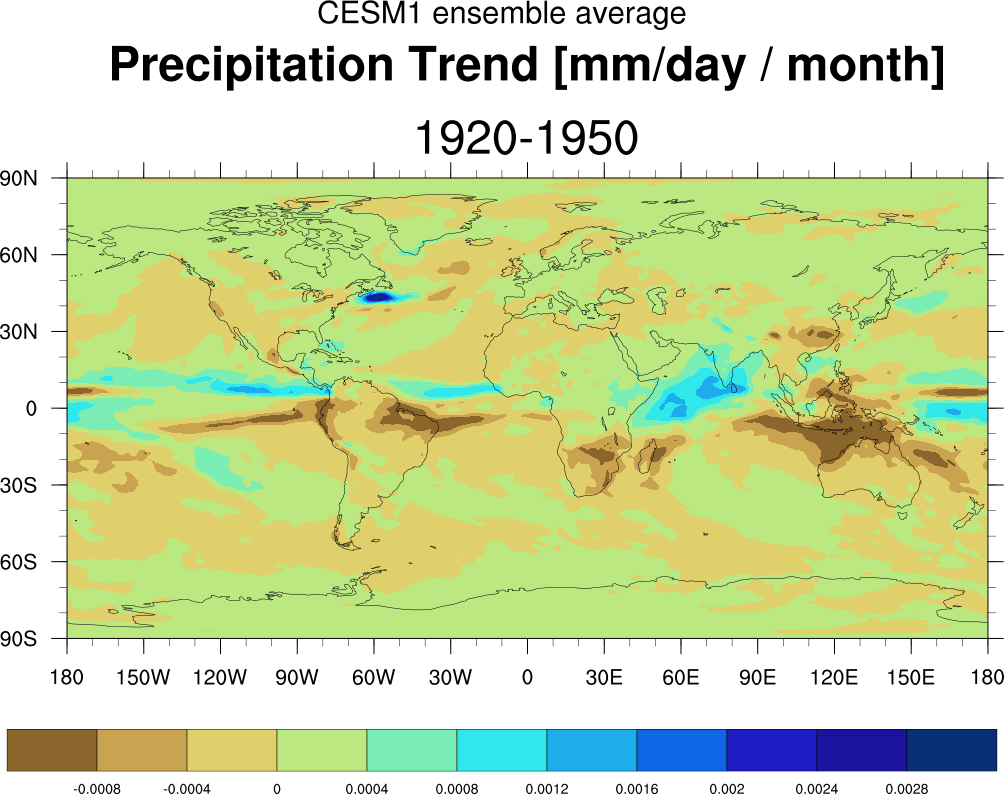


-----------------------------------------------------------------------------------------------------------
Anomalies for El Ninos for 3 30-year periods:



Everything above detrended over 31-year periods repectively.
Anomalies for the top-El-Nino-related-precipitation for 3 30-year periods:



Everything above detrended over 31-year periods repectively.



Everything above detrended over 31-year periods repectively.
CESM1 Z250 regression with Nino3.4 index for 3 eras:
Mays only
El Ninos only:



All Nino3.4 cases (El Ninos, ENSO Neutral, La Ninas):
detrended and standardized:




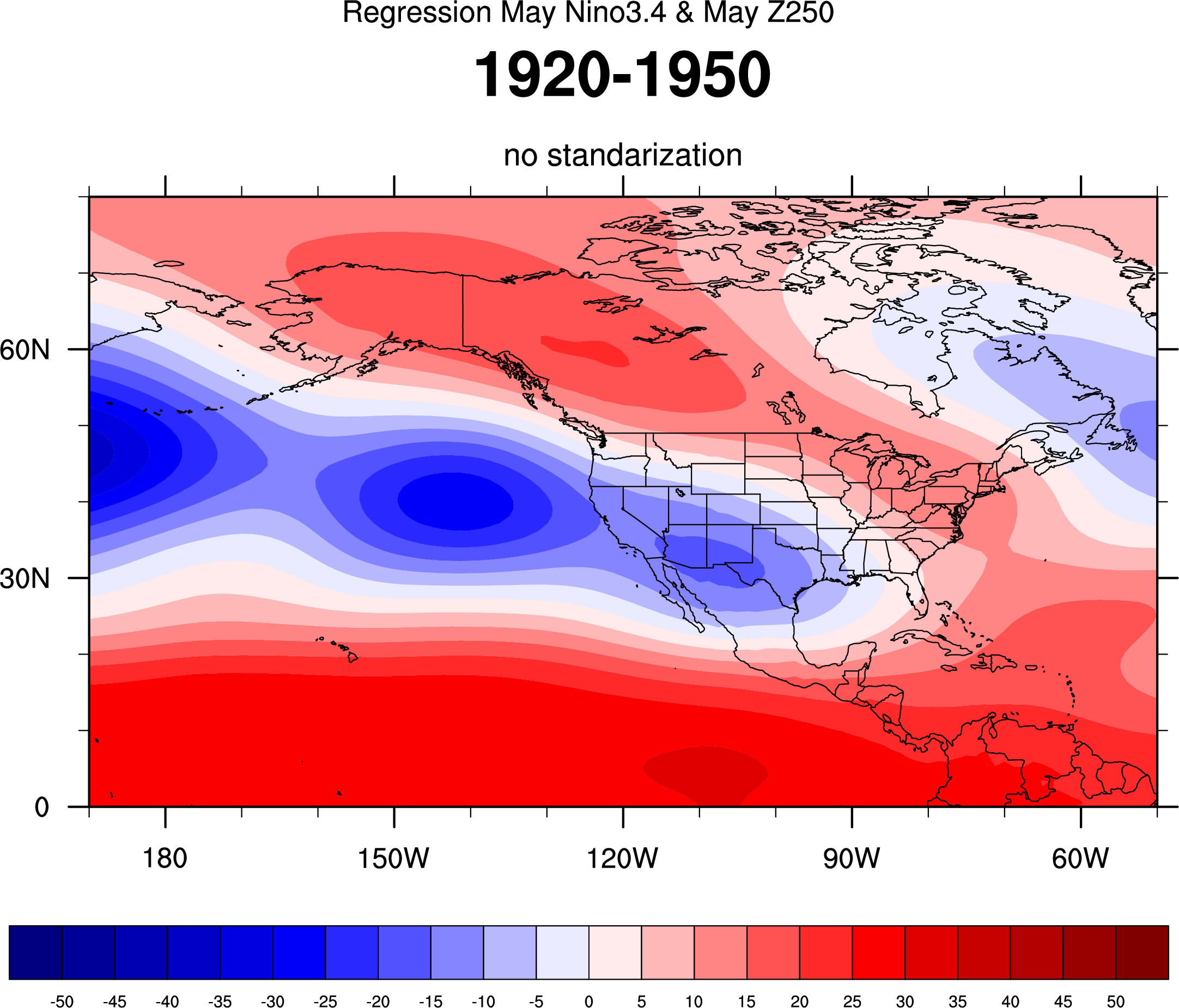



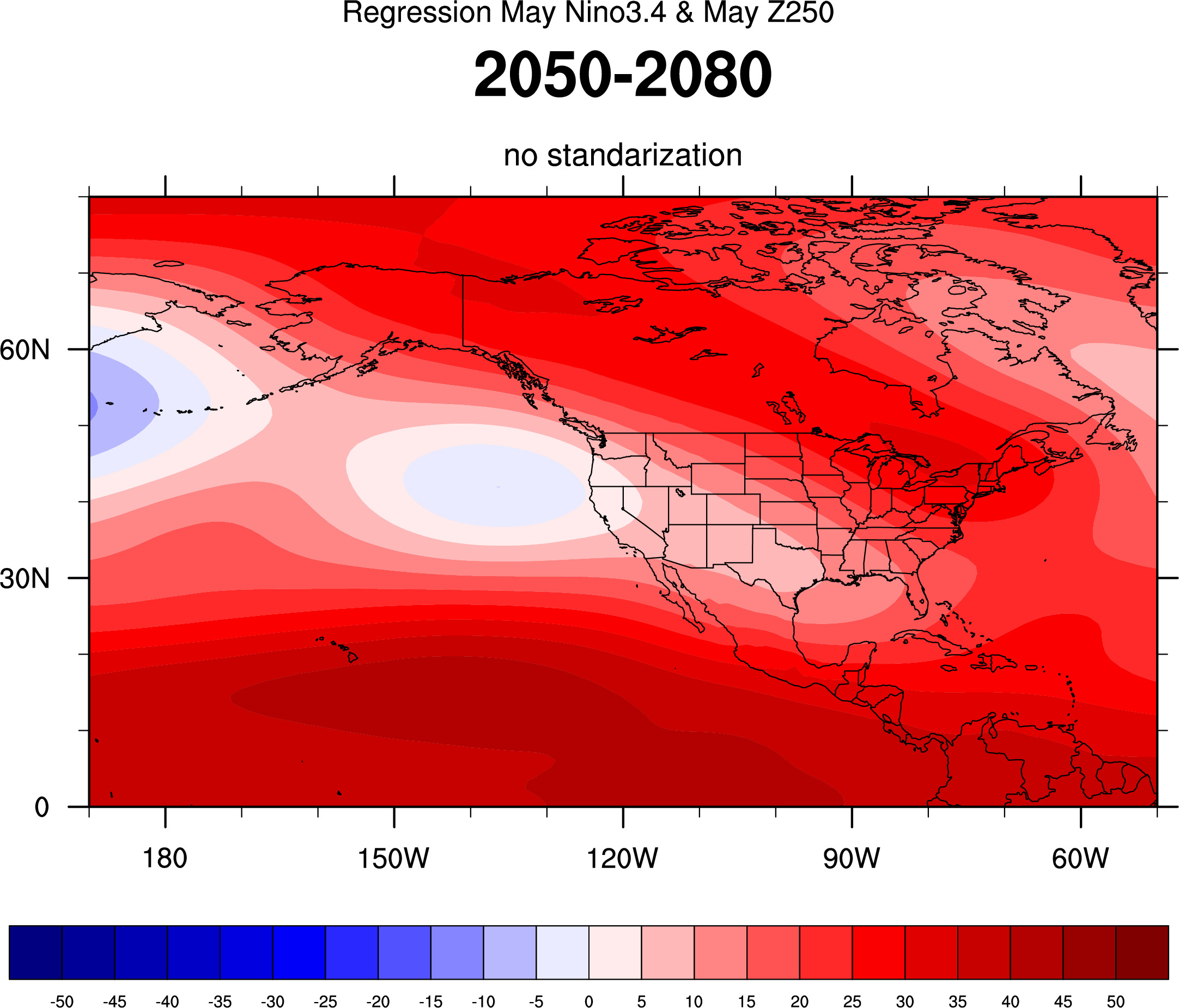
CESM1 TS regression with Nino3.4 index for 3 eras:
Mays only

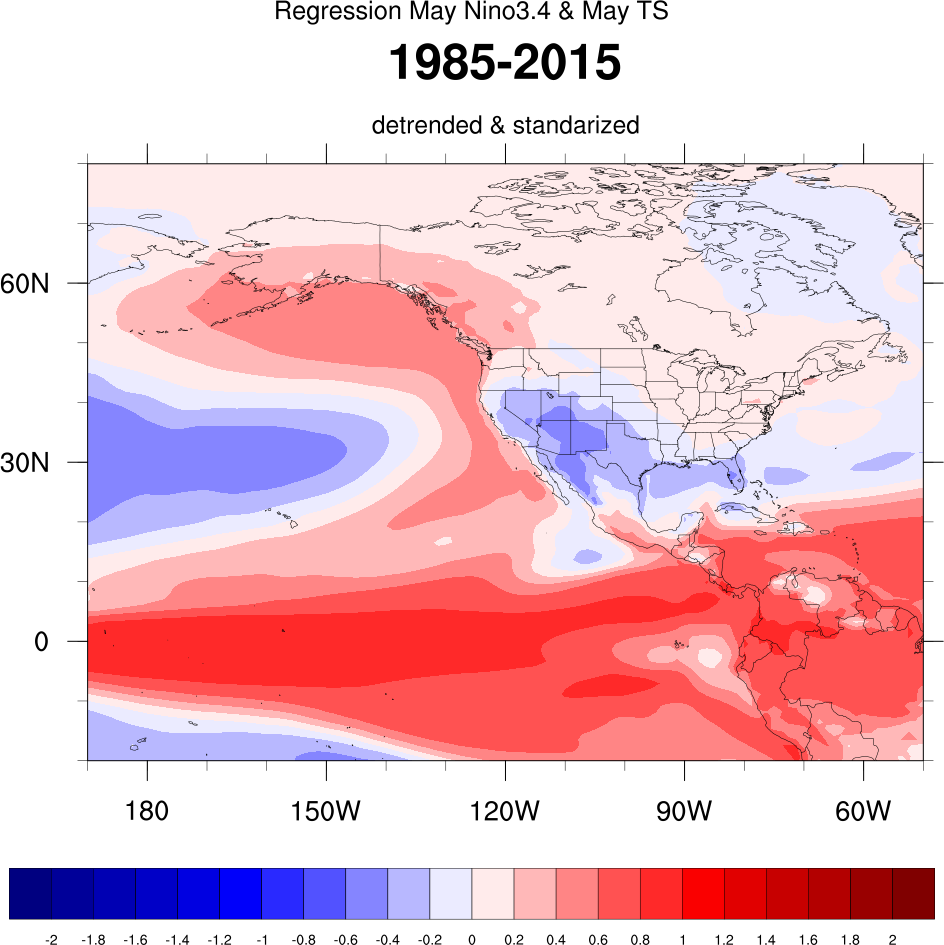

Not detrended and standardized:



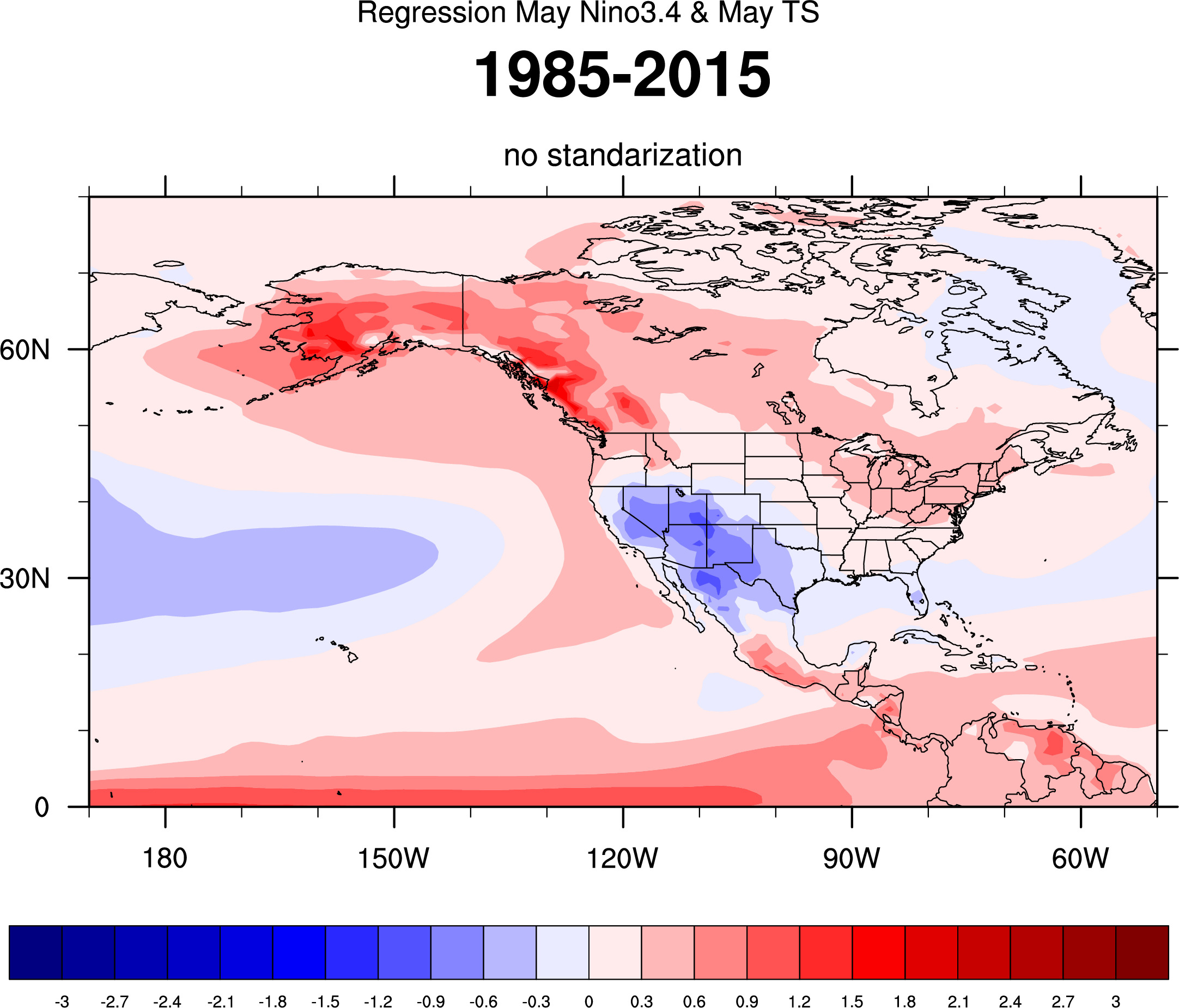


-------------------------------------------------------------------------------
CESM1 Precipitable Water
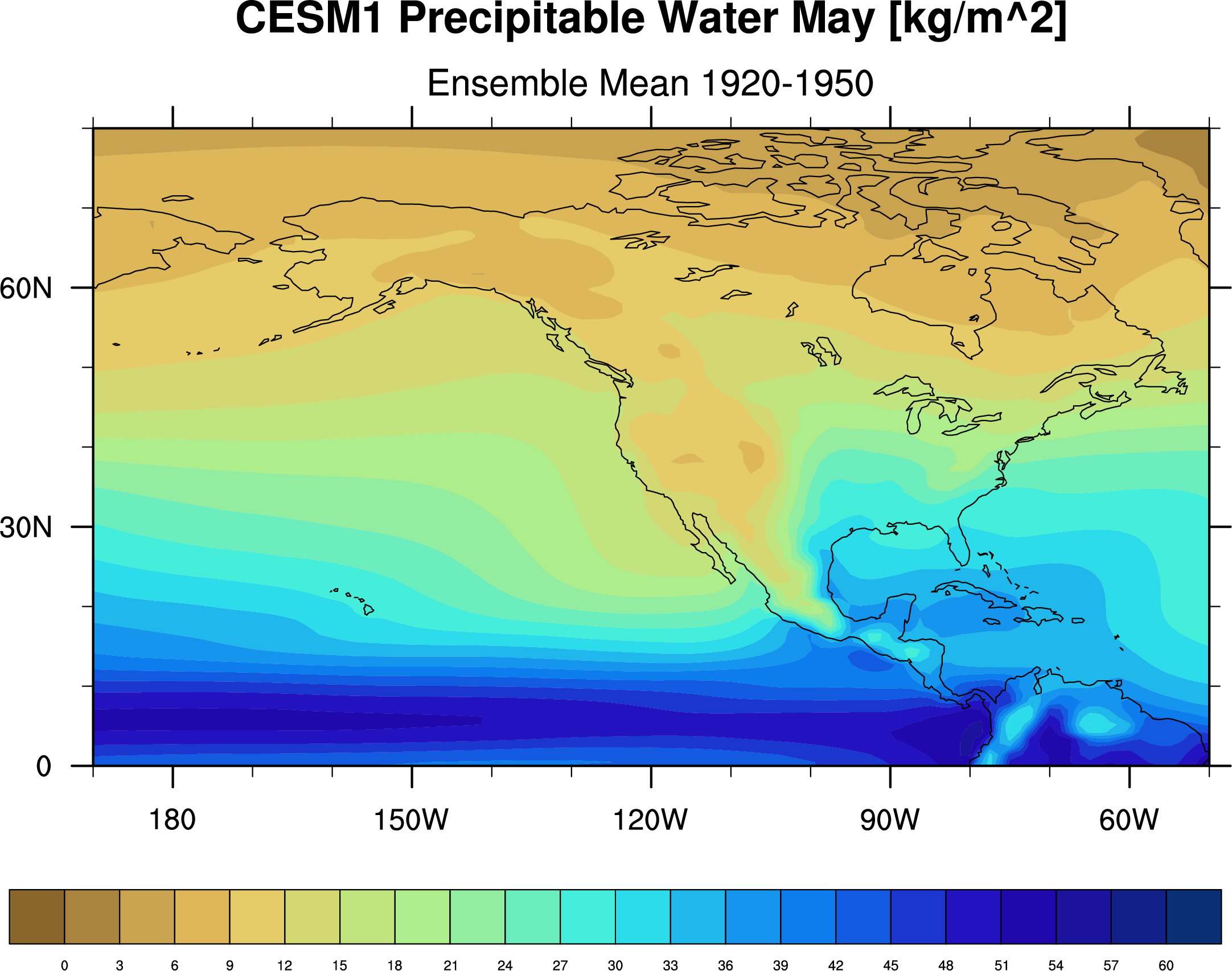


Area average for TX OK: 26.14823, 27.04114, 31.95849 kg/m^2 for 3 eras, respectively.



Standard deviations compare different runs in the ensemble.

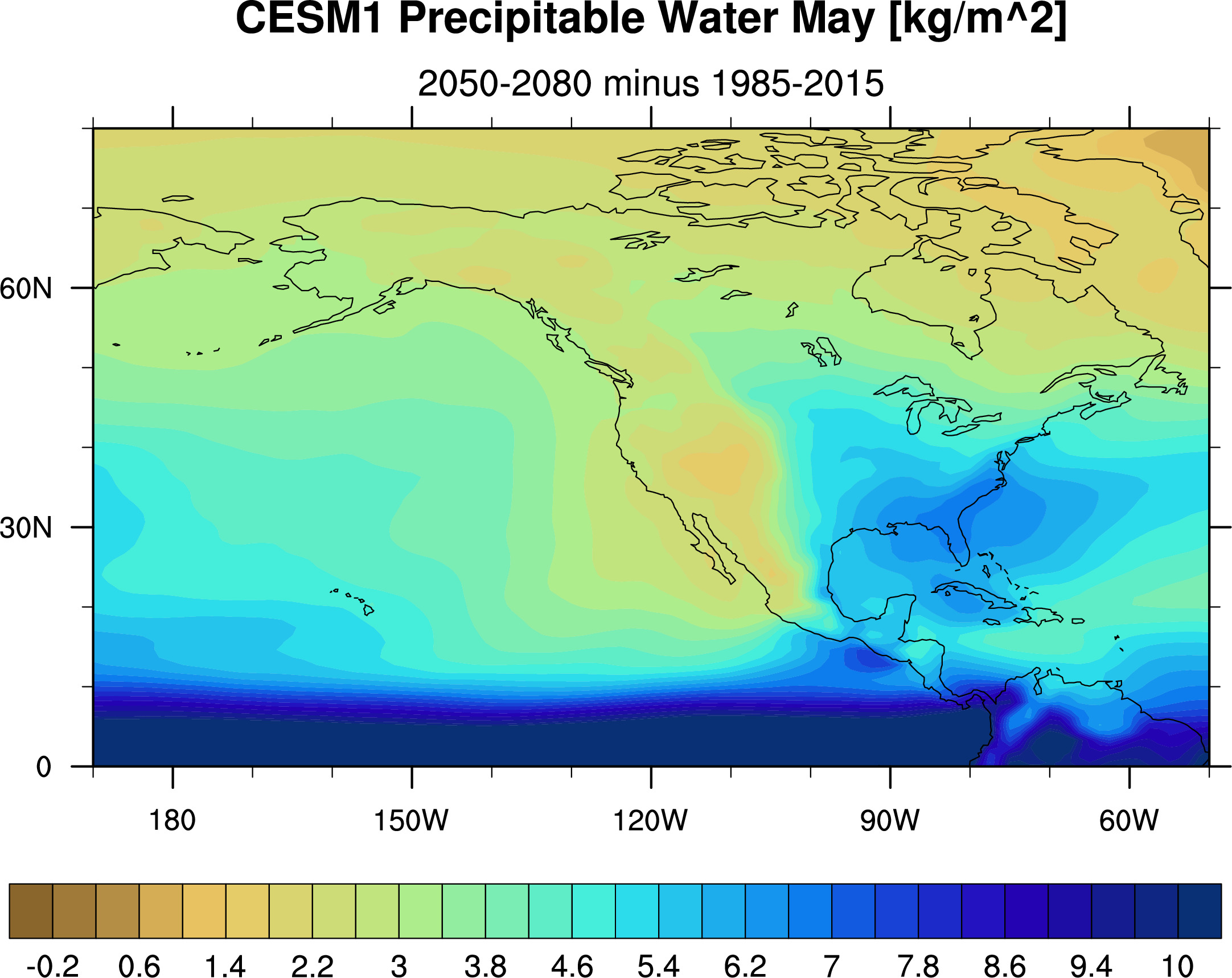


Percentages above computed wrt average over 1985-2015 period.
----------------------------------------------------------------------------------------------------
Observations
SST Observations


Precipitation Observations



Z Observations



Precipitable Water Observations

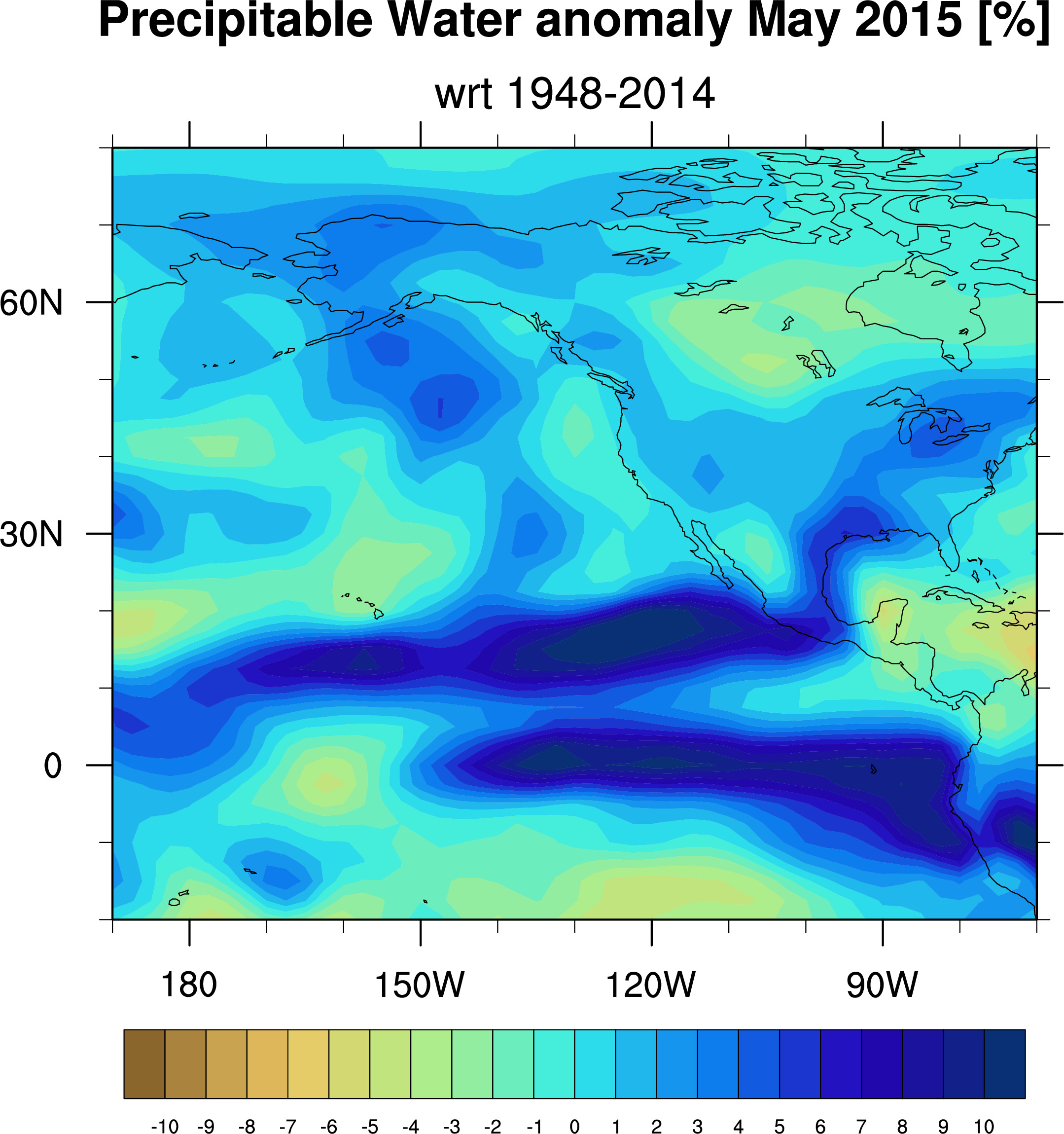
----------------------------------------------------------------------------------------------------------------------------------------------------------------------
SST Observations
Various



SST Trend:

----------------------------------------------------------------------------------------------------------------------------------------------------------------------
TEXAS PRECIPITATION
old Variability below
old Climatologies below
--------------------------------
Z500 corresponding to wettest precip
Models:

Individual runs:




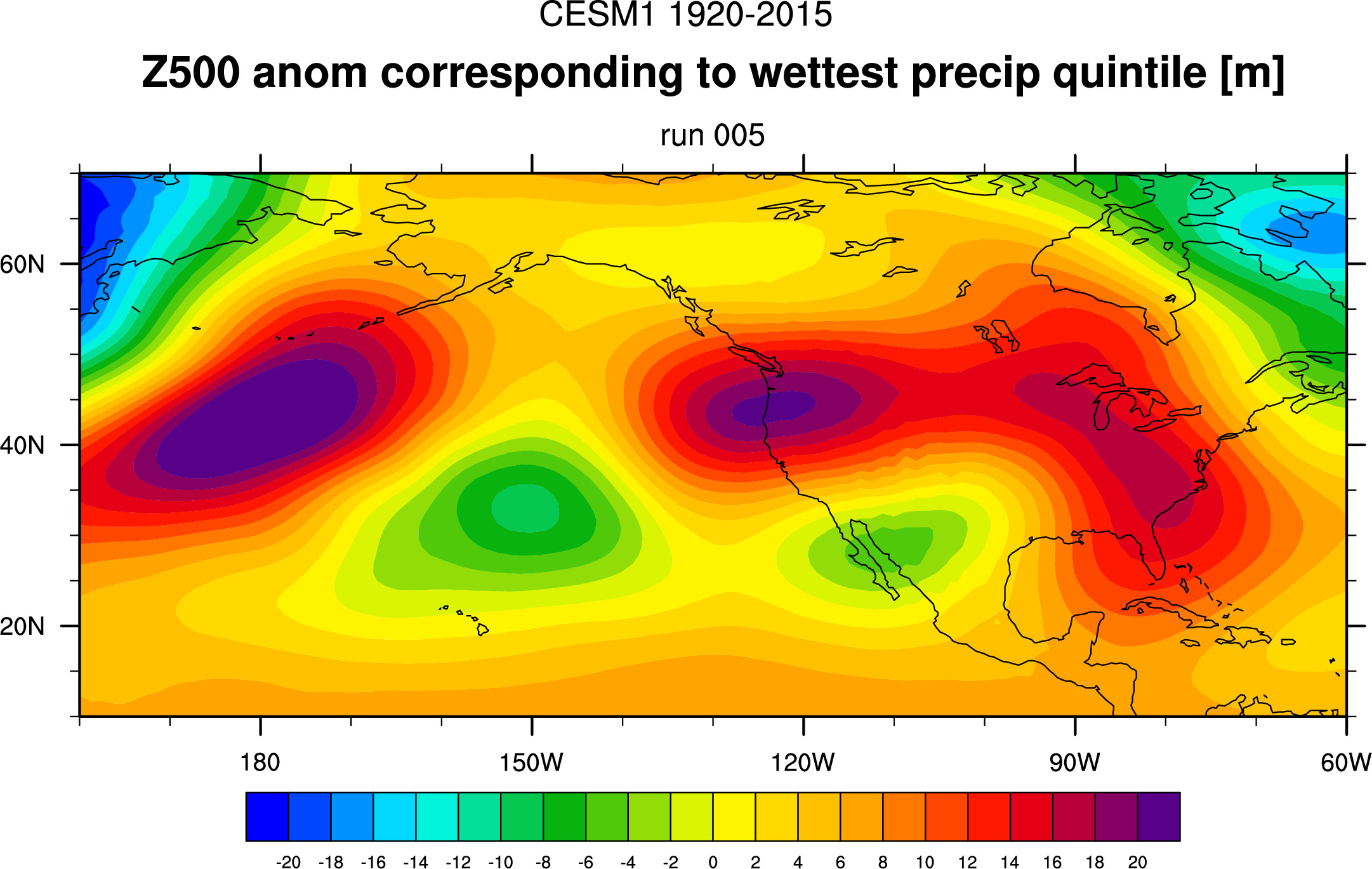





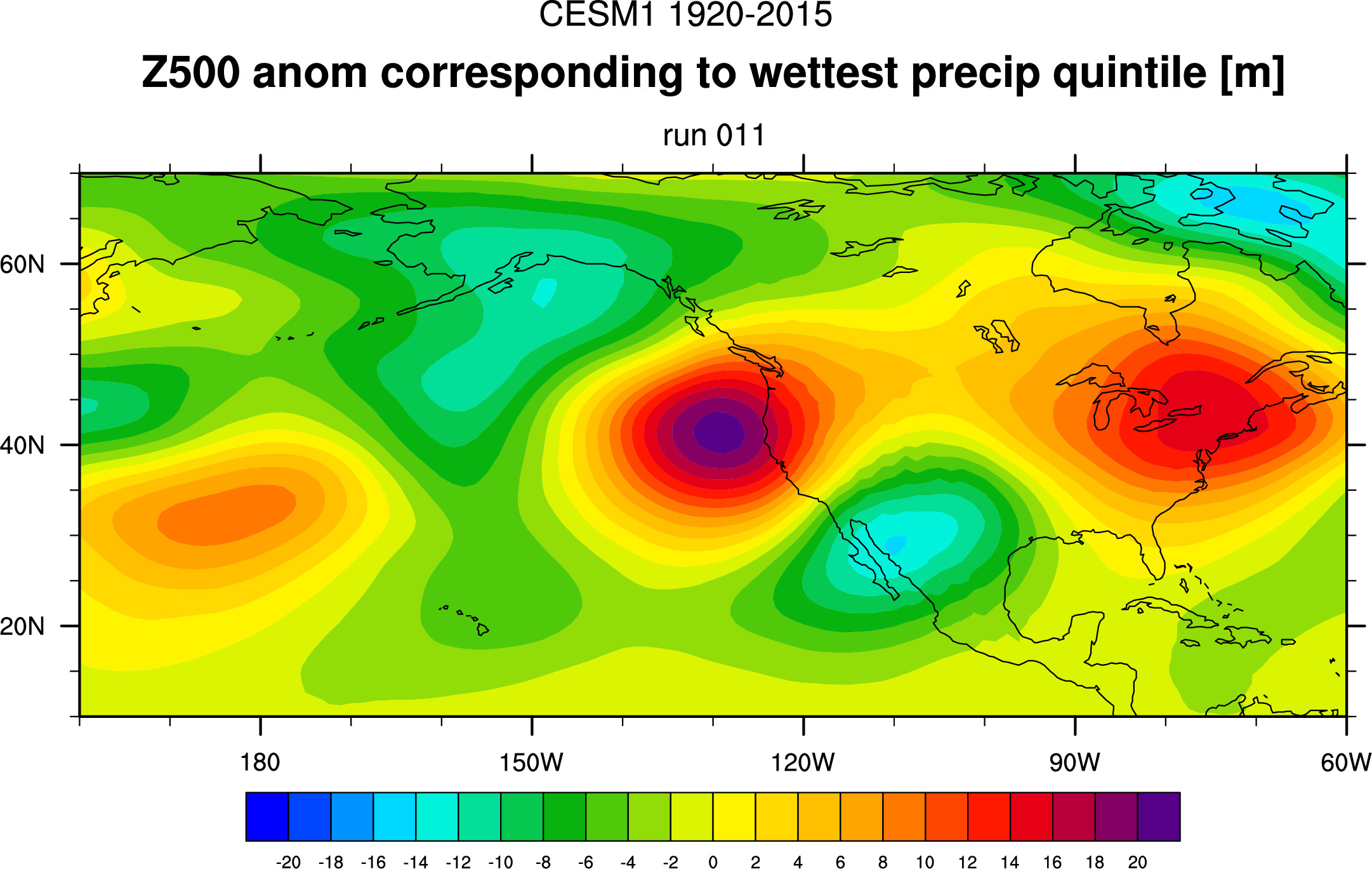



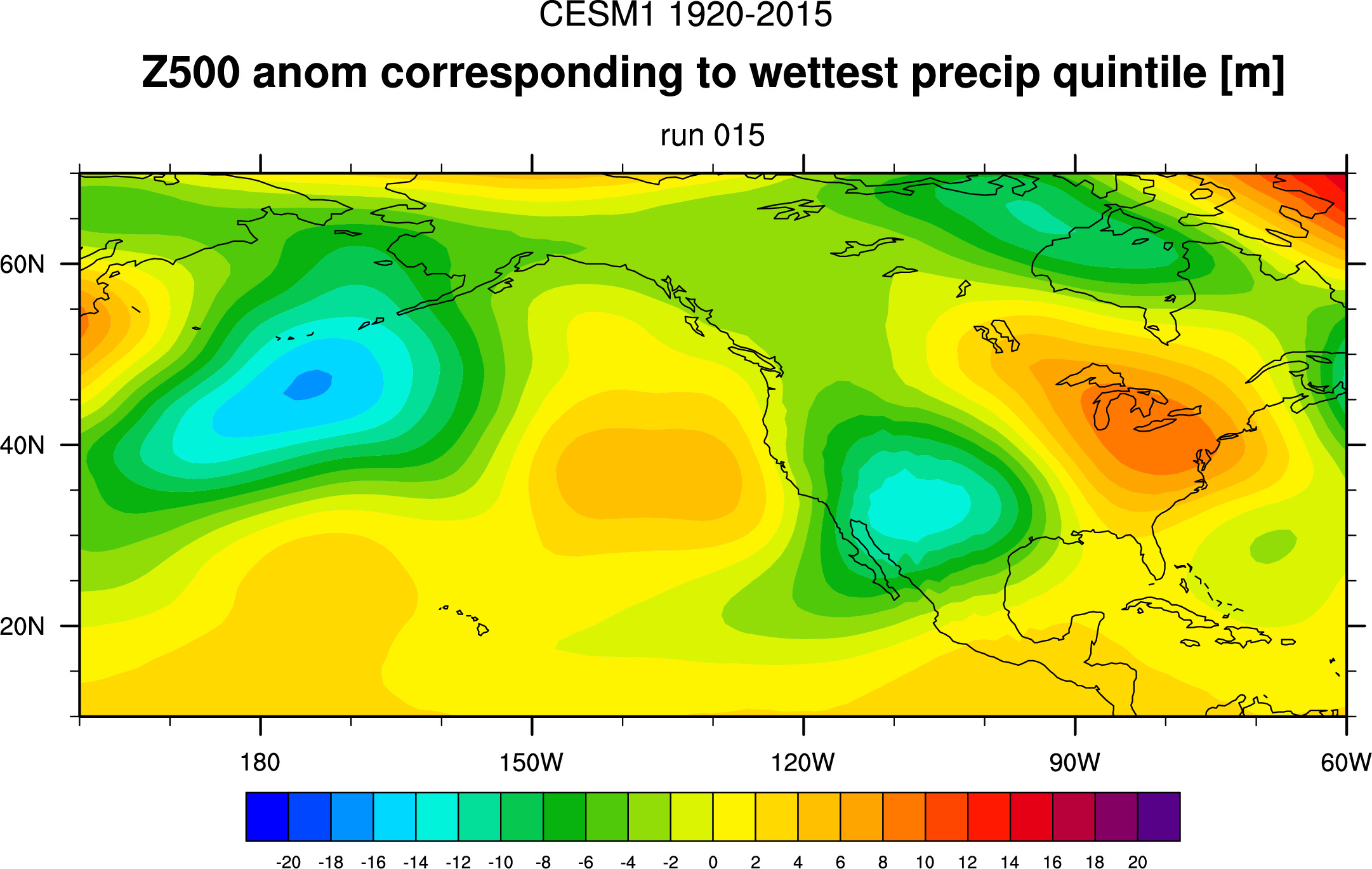
















Individual runs:
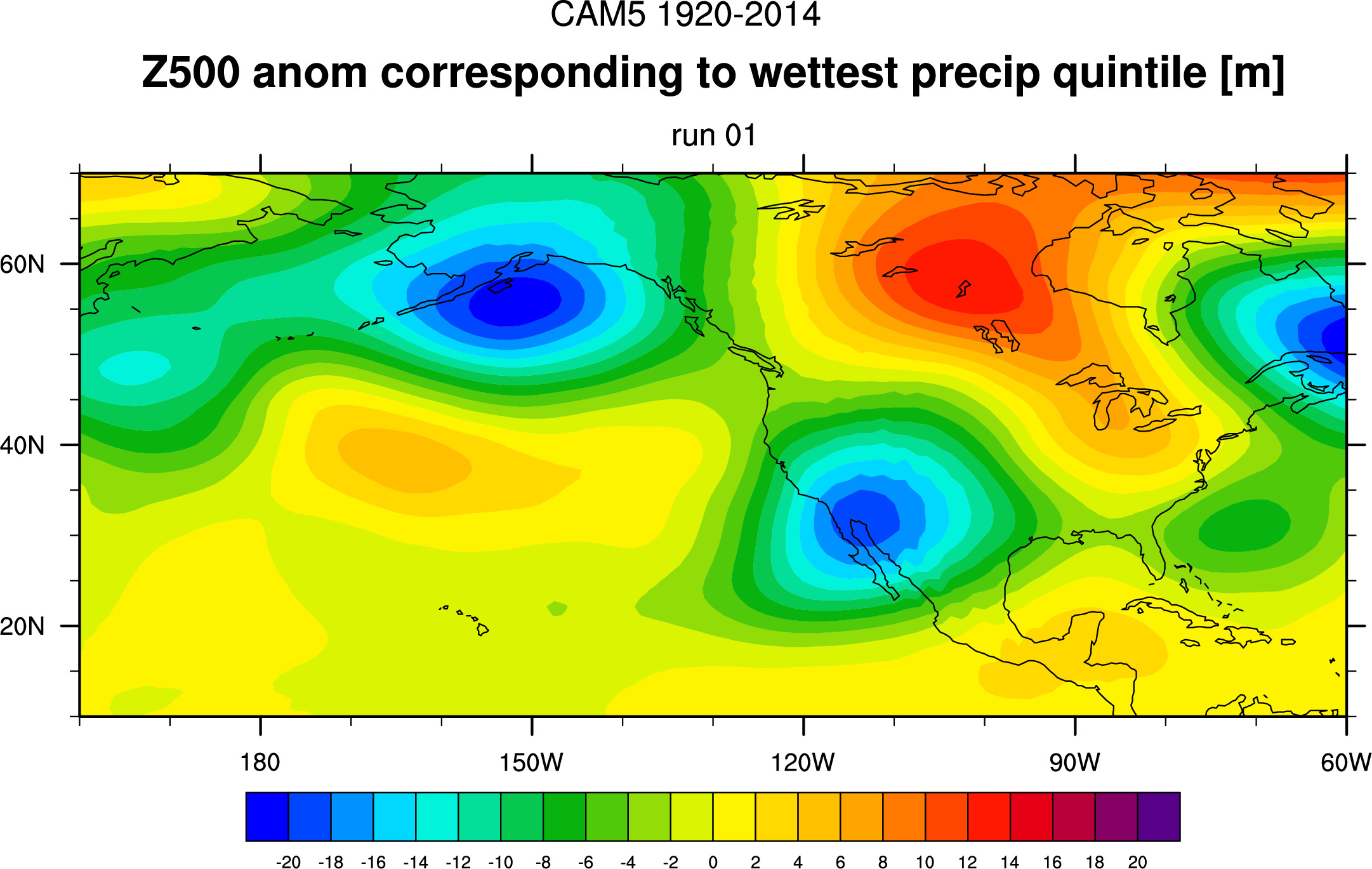




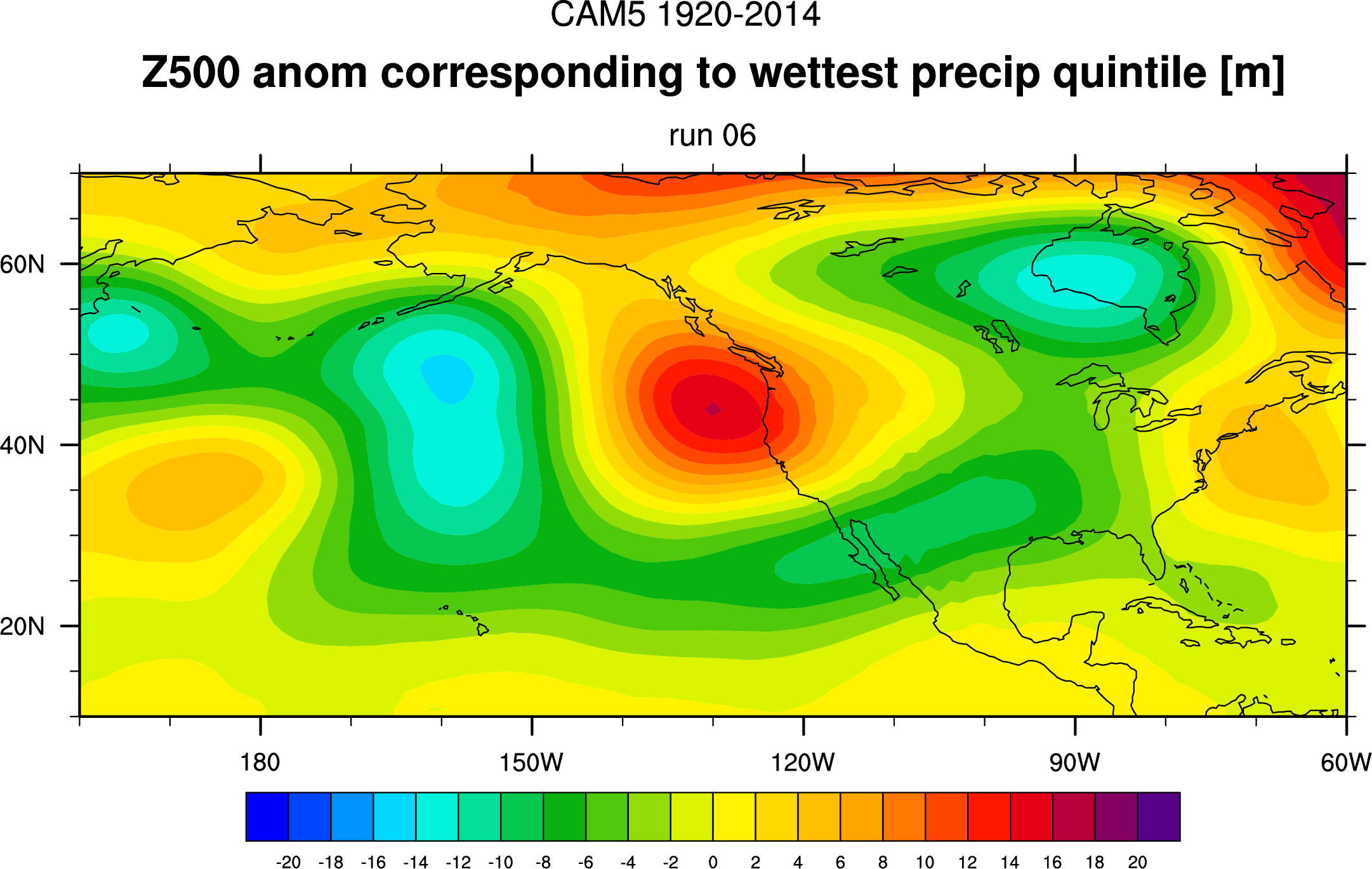








SSTs corresponding to wettest precip
Models:

Individual runs:

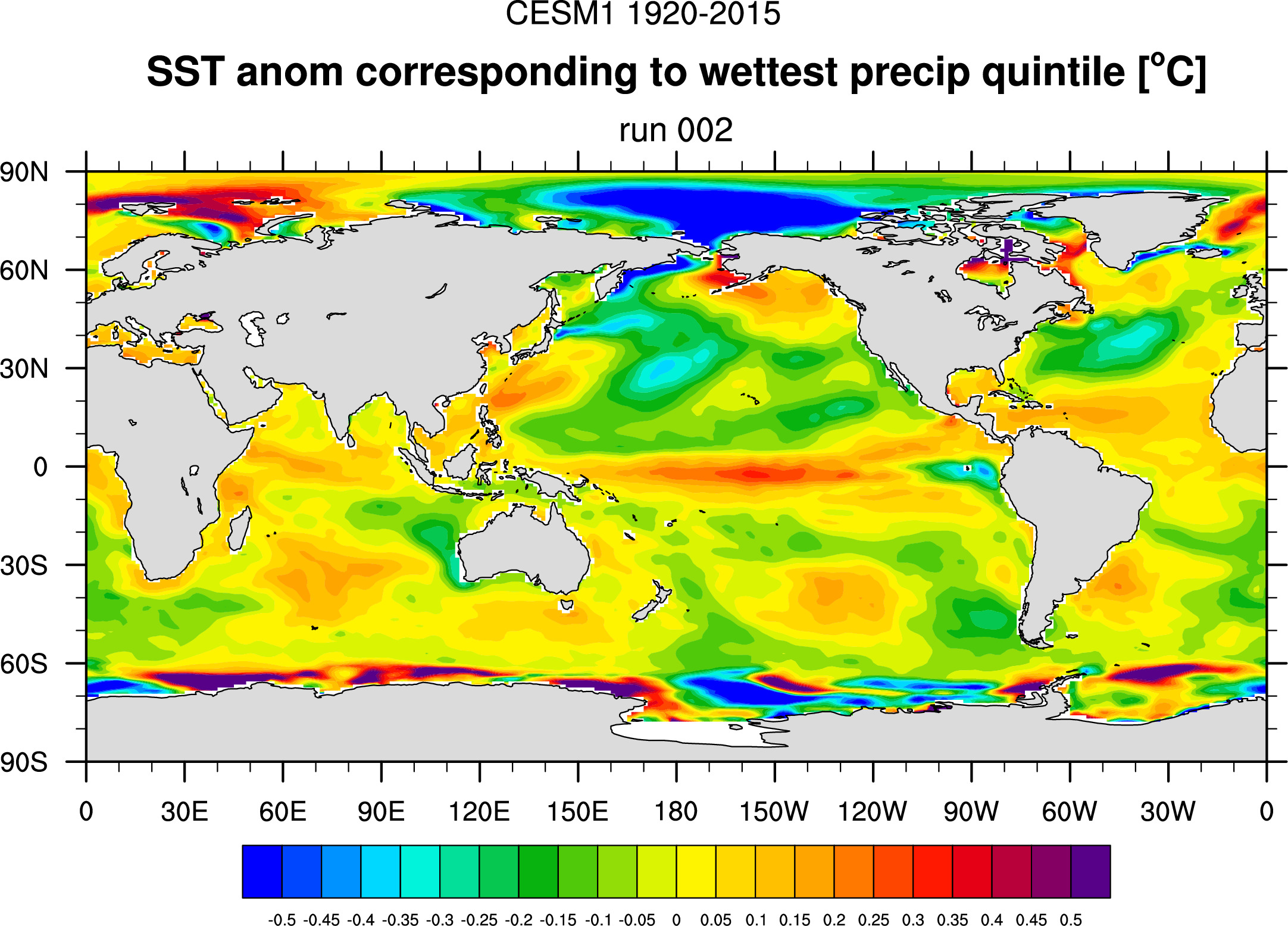












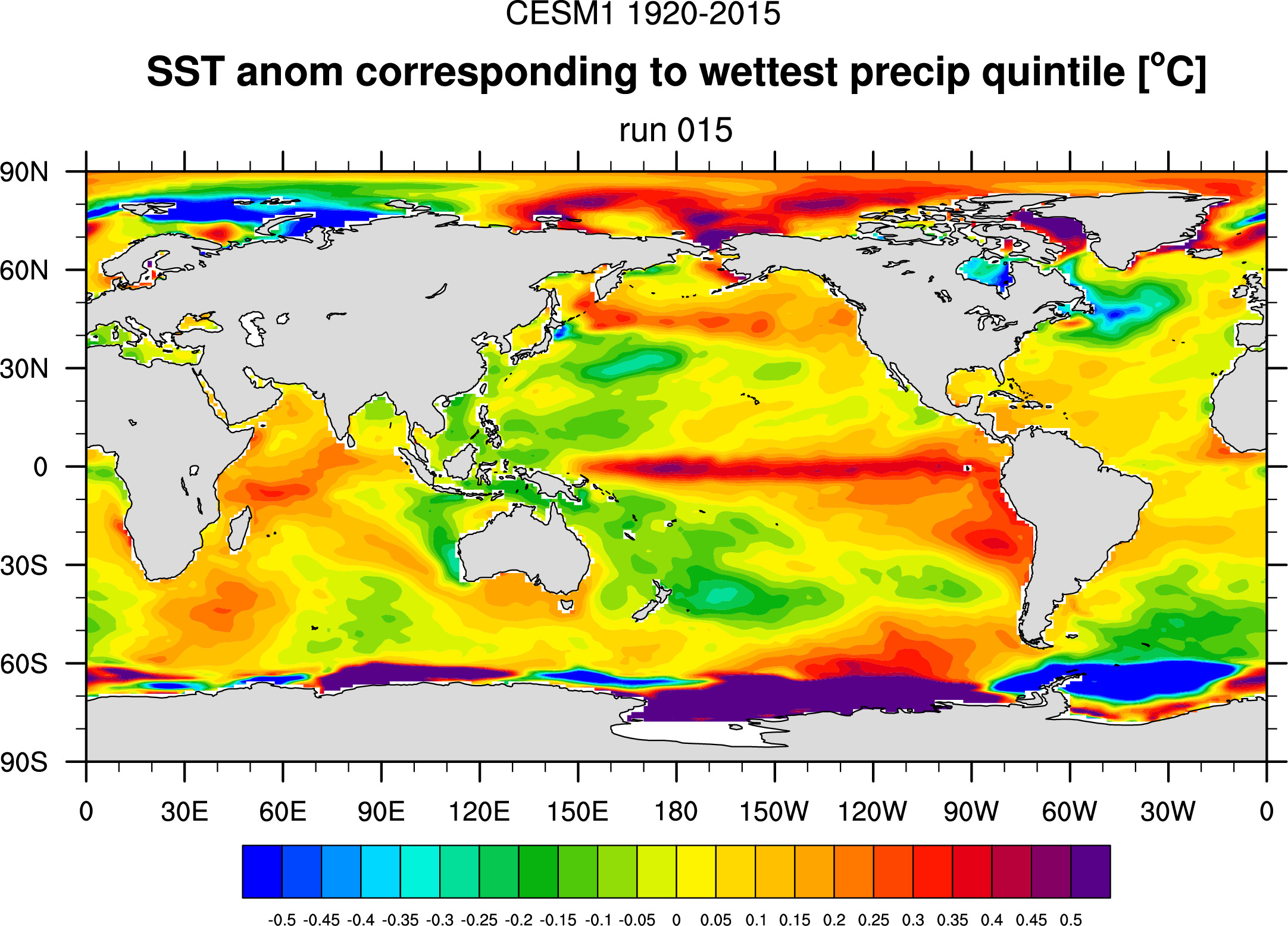

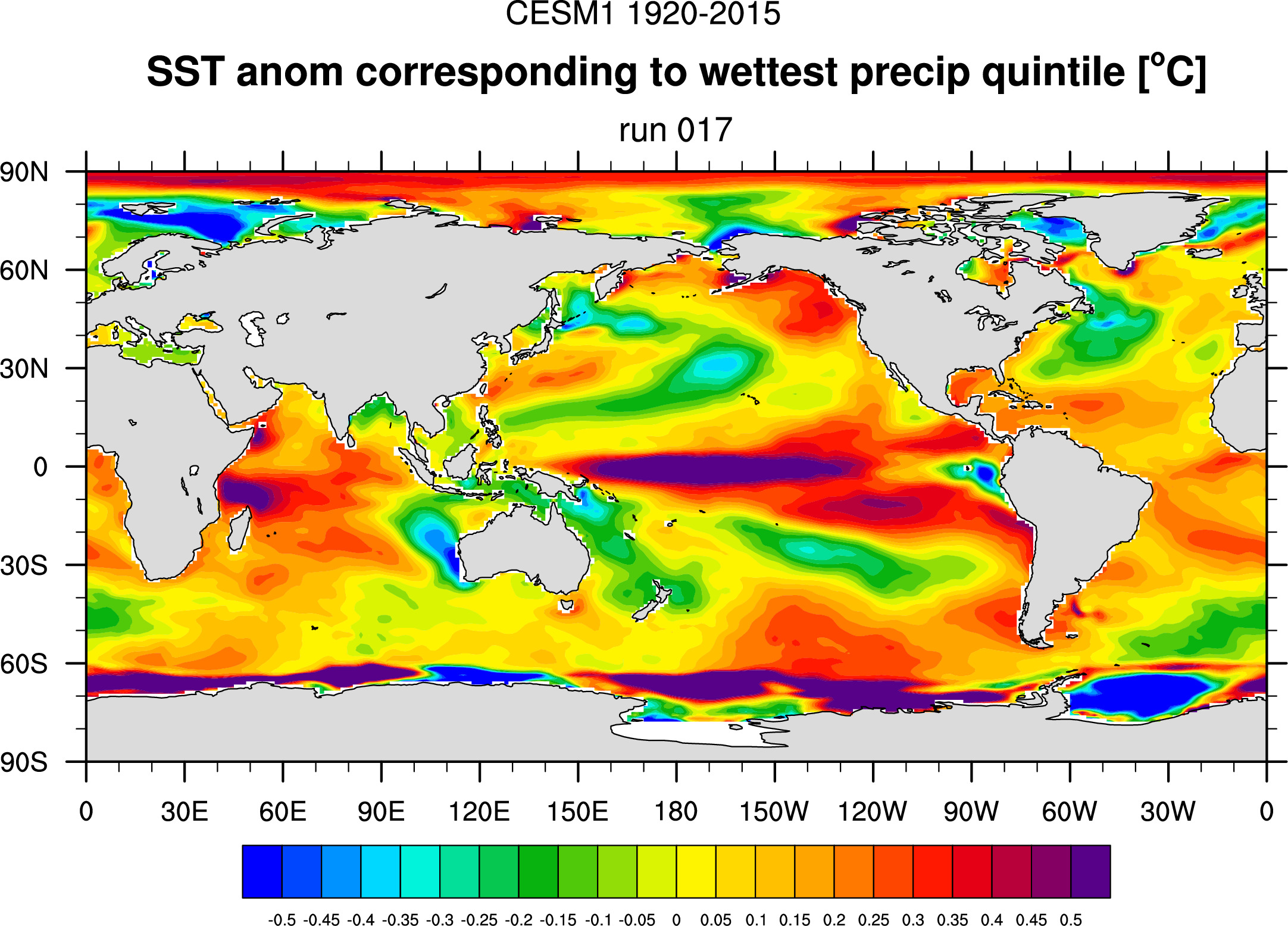

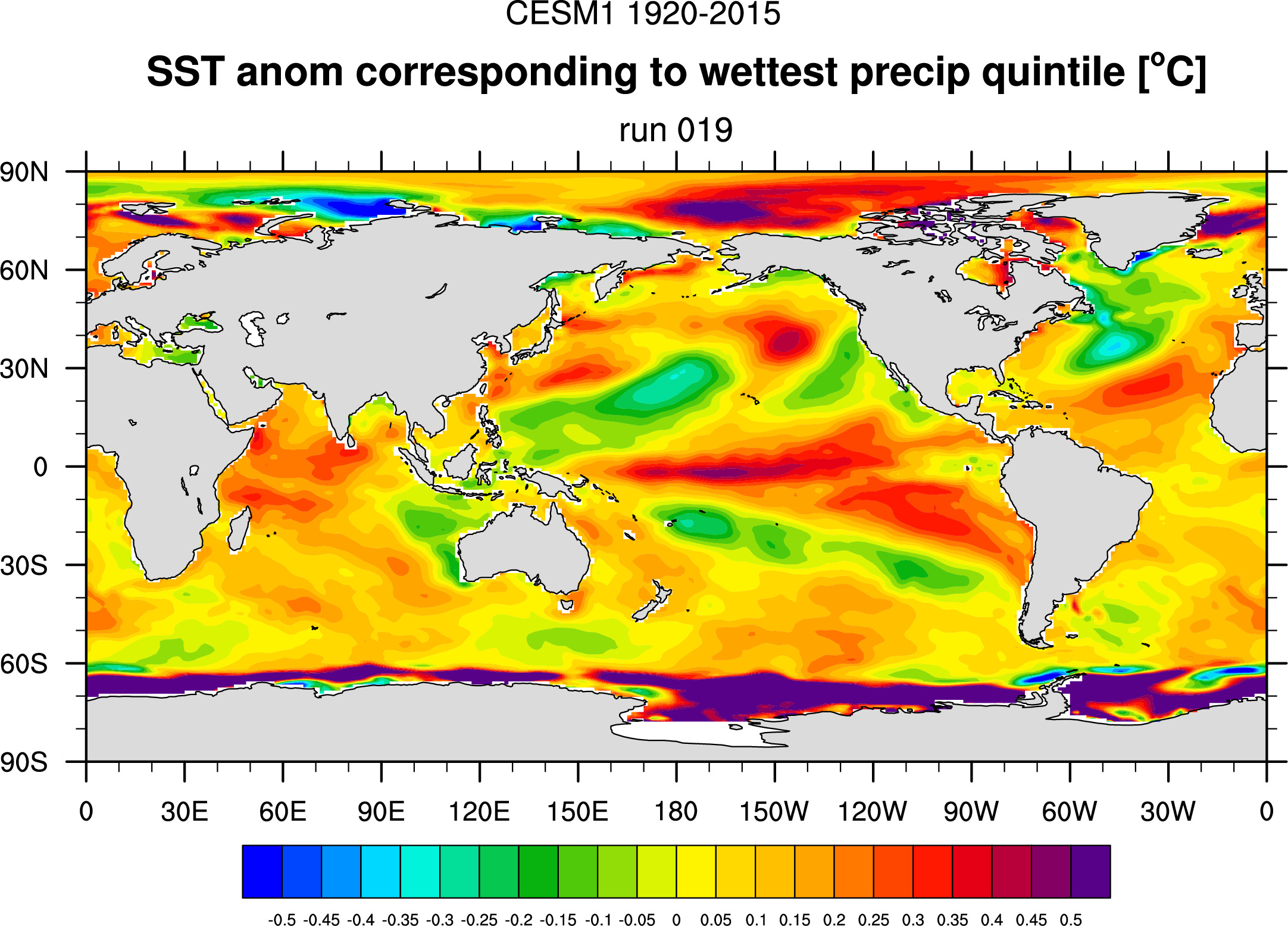






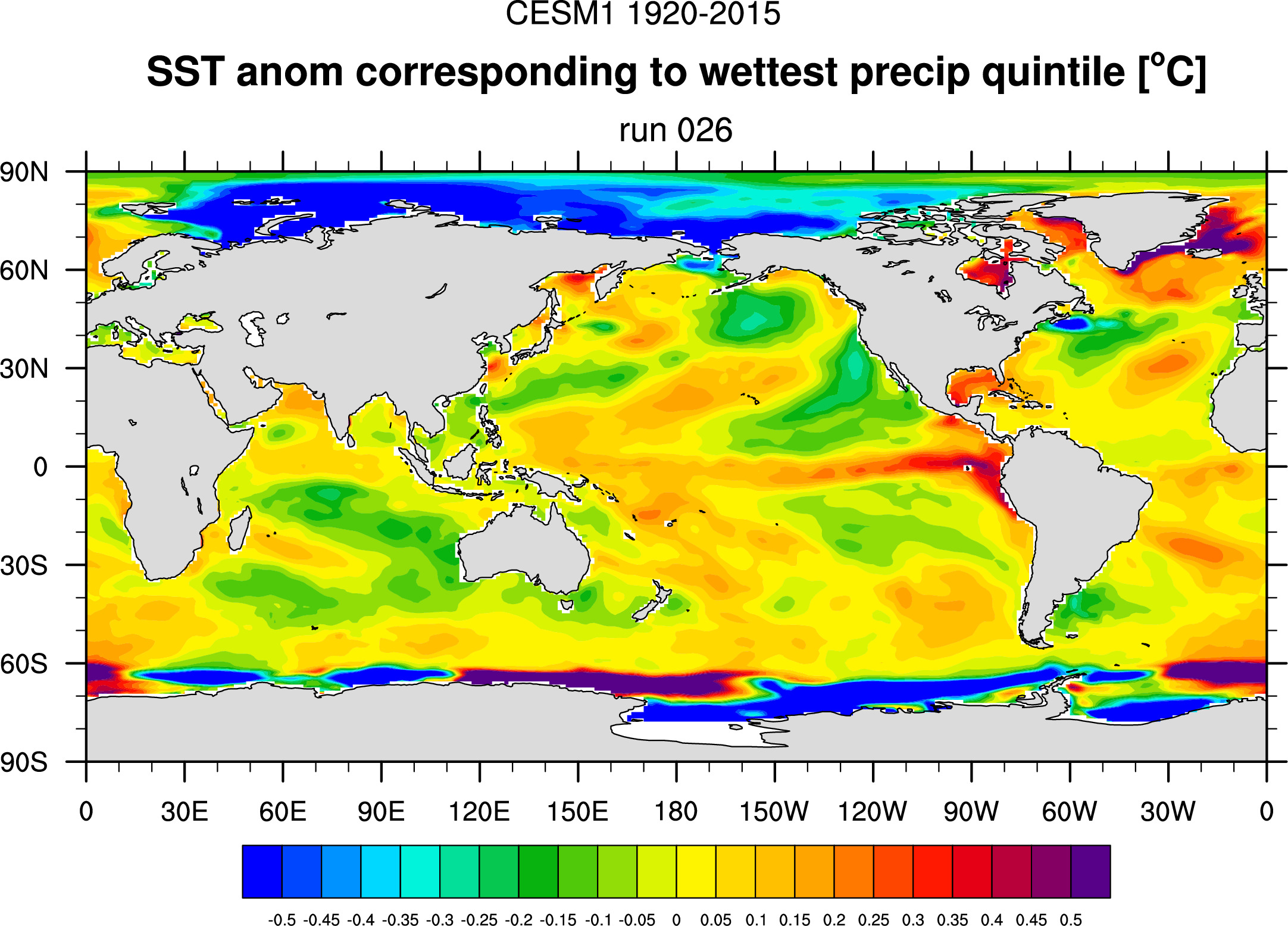








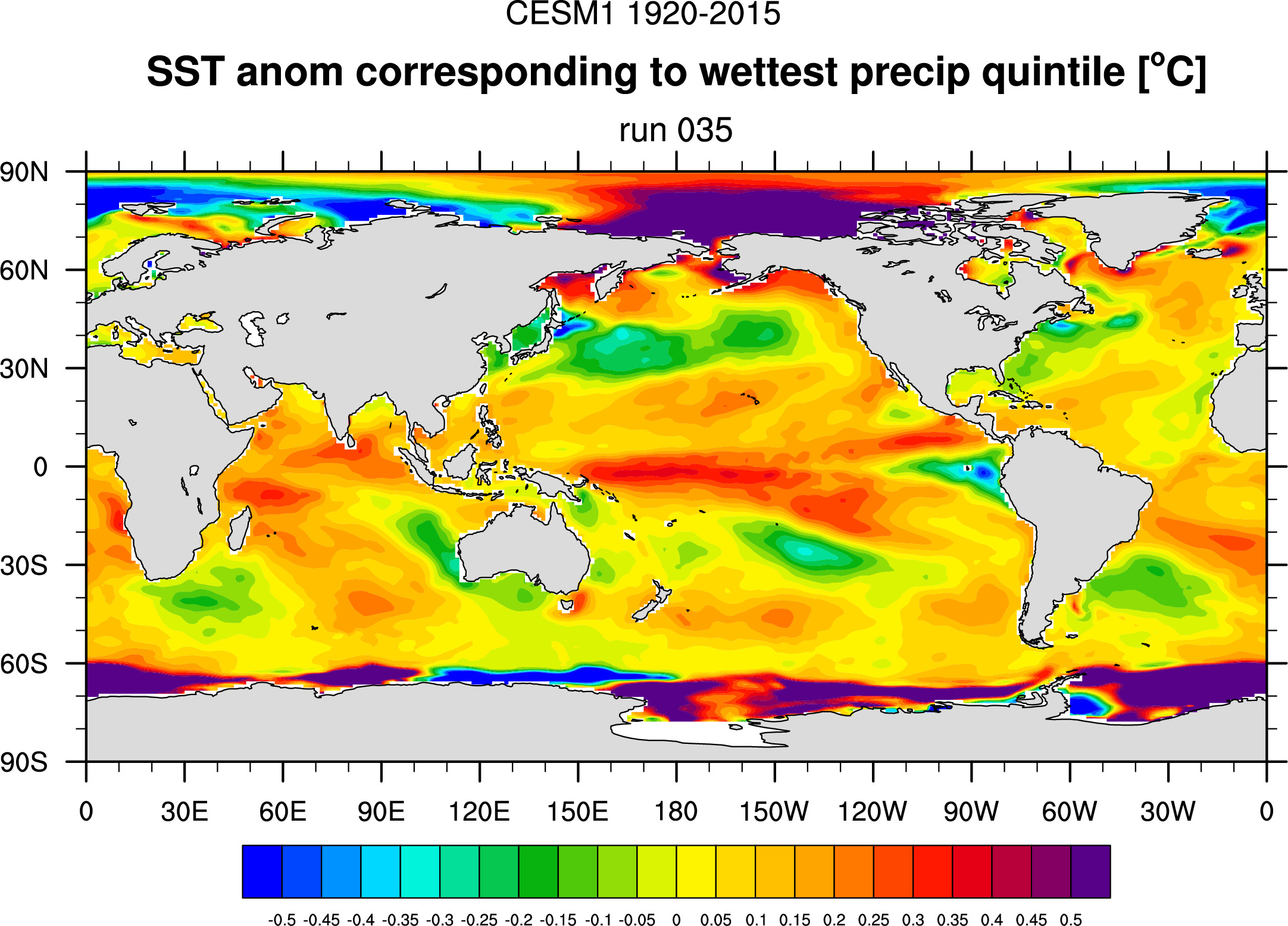





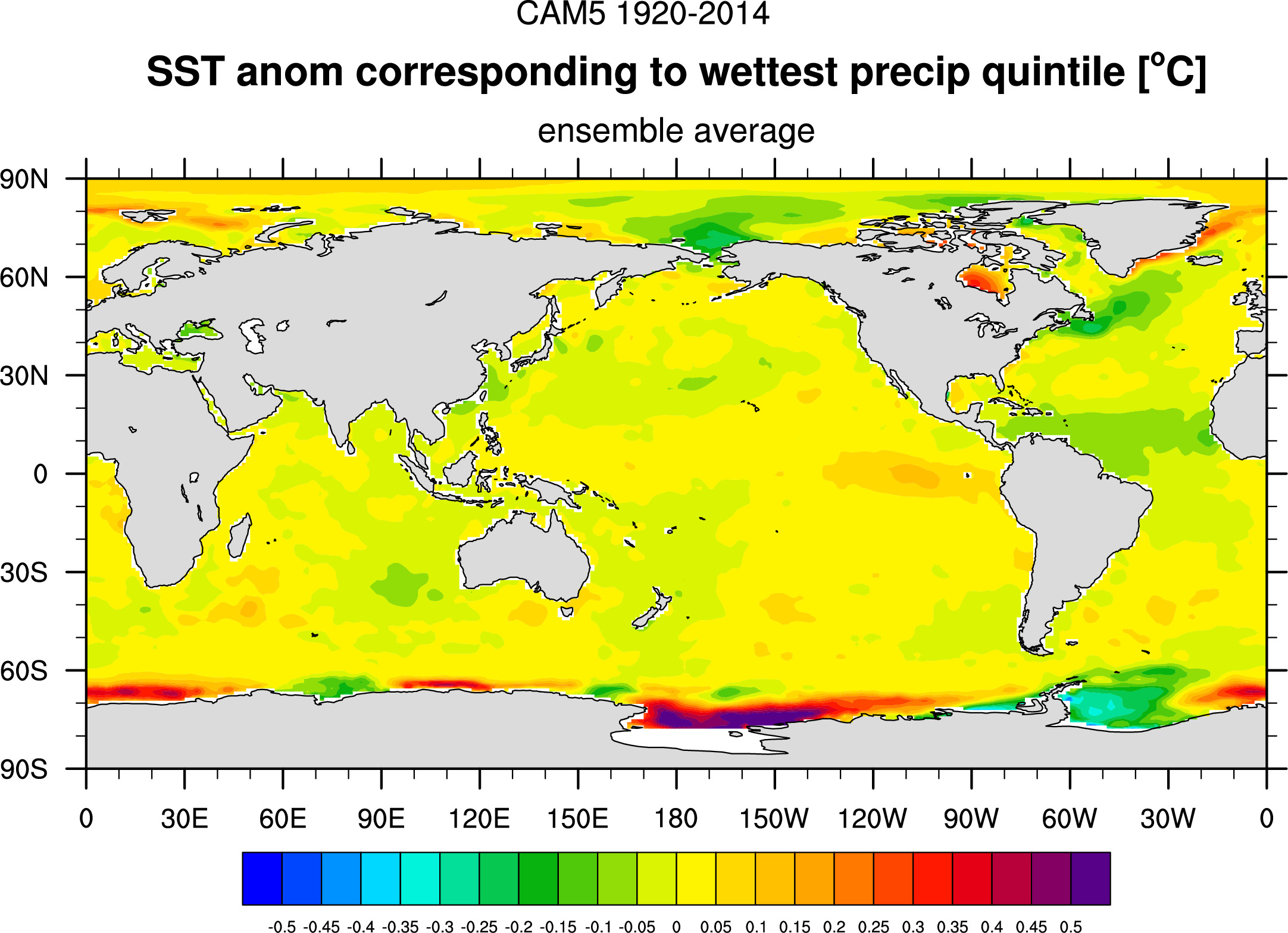
Individual runs:










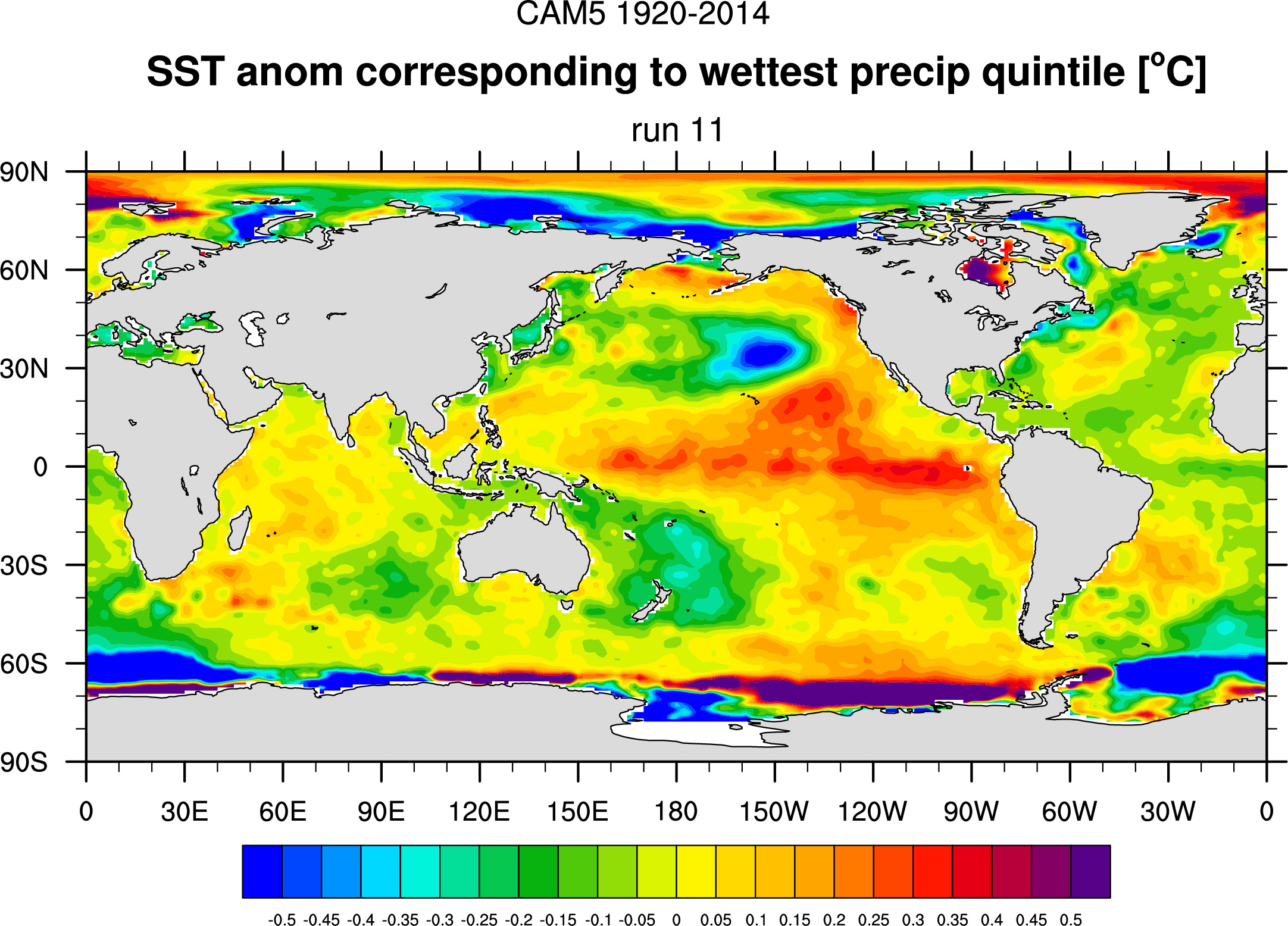



SSTs
Various
SSTs for 1920-2015:


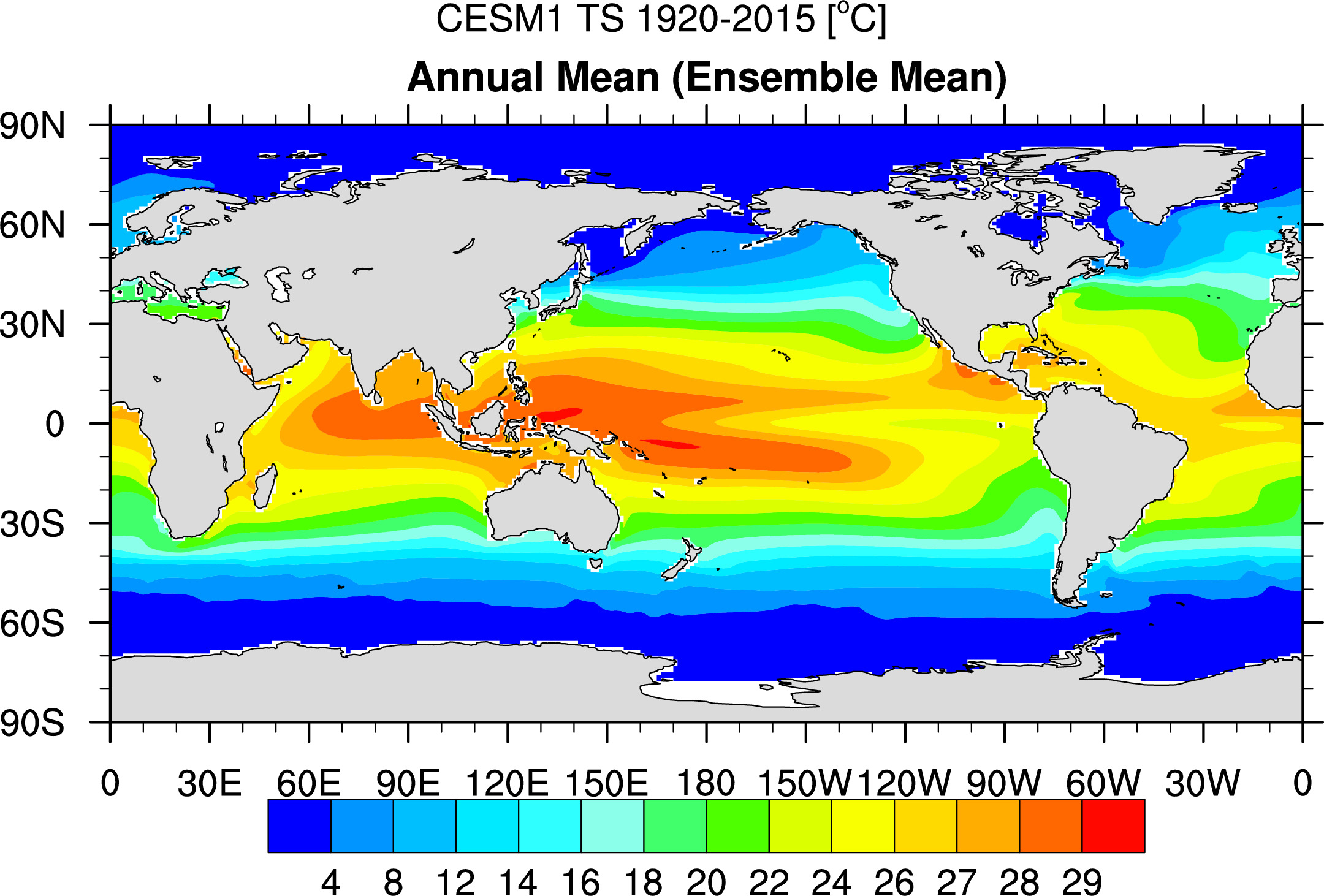
Texas and Oklahoma Precipitation:










Time series



Texas, Oklahoma & New Mexico Preciptation:
Observations
Precipitation

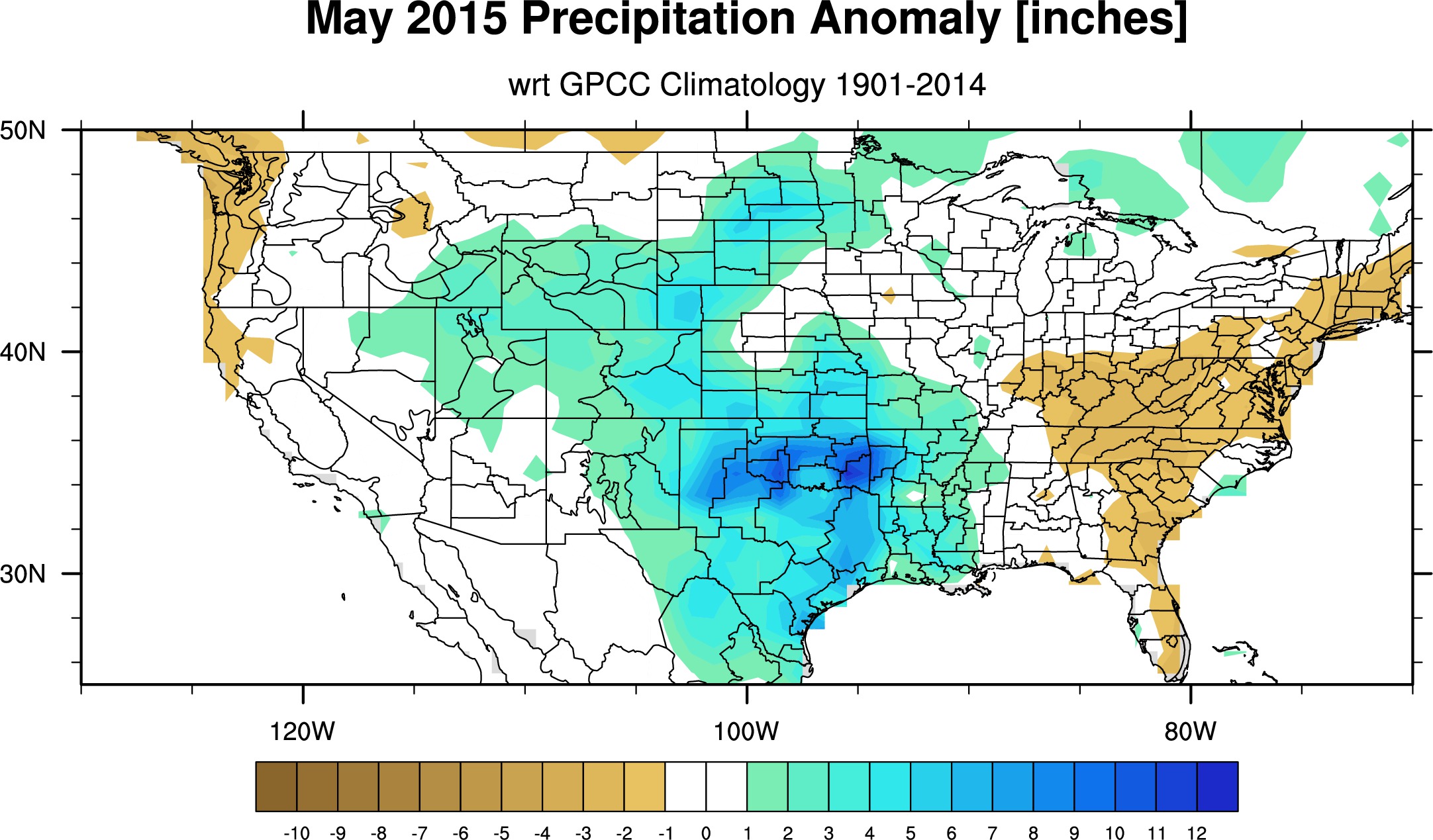
Time Series of 1800s-2015 May pcpn for NM/TX/OK area average

dashed blue line is mean (excluding 2015)
small-dashed black lines indicate two standard deviations (excluding 2015)

Re. wettest May precip quintiles
Composite 500Z/SST for top quintile wettest Mays
Observations:


-----------------
Model output (ensemble average):

Model output (individual runs):

















Model output (standard deviation):

Observations:


Model output (ensemble average):

Model output (individual runs):















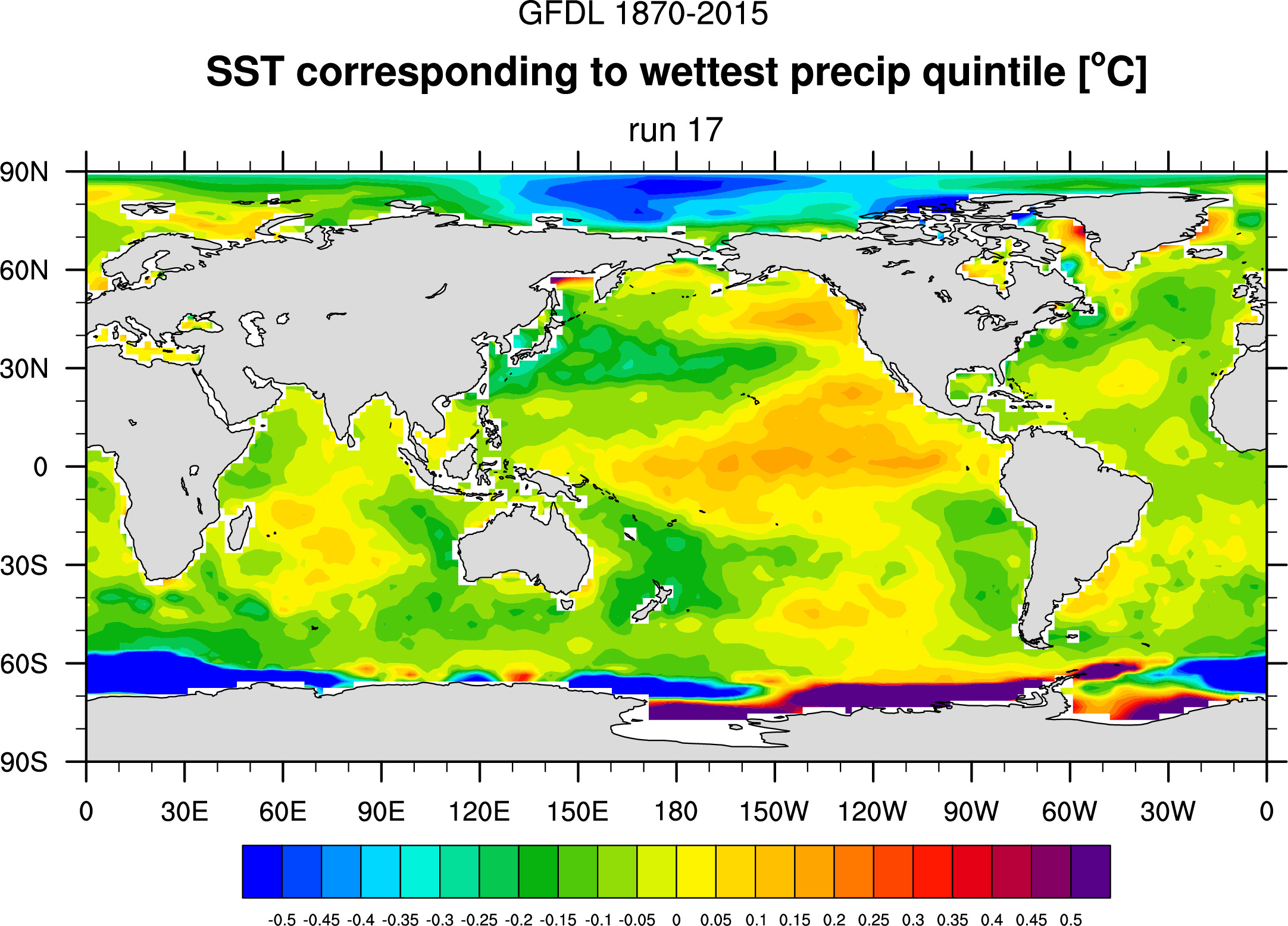

Model output (standard deviation):

Variability

Model Output



Maps (right click to see bigger images):
Note: the below "CESM1" data is actually CESM1_AMIP, aka, CAM5 data:



Probability Distributions
observations and concatenated model runs (no ensemble means):
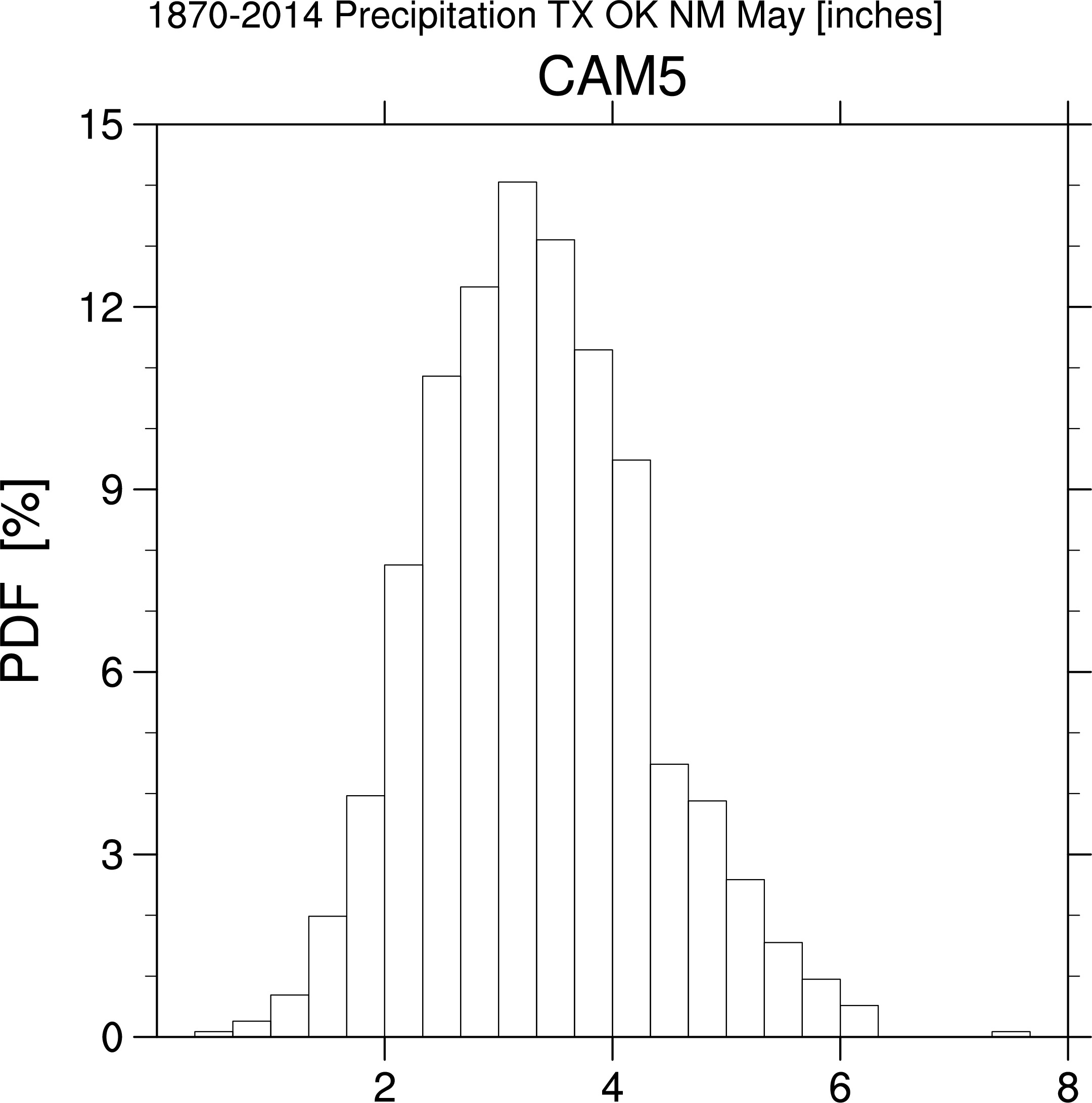

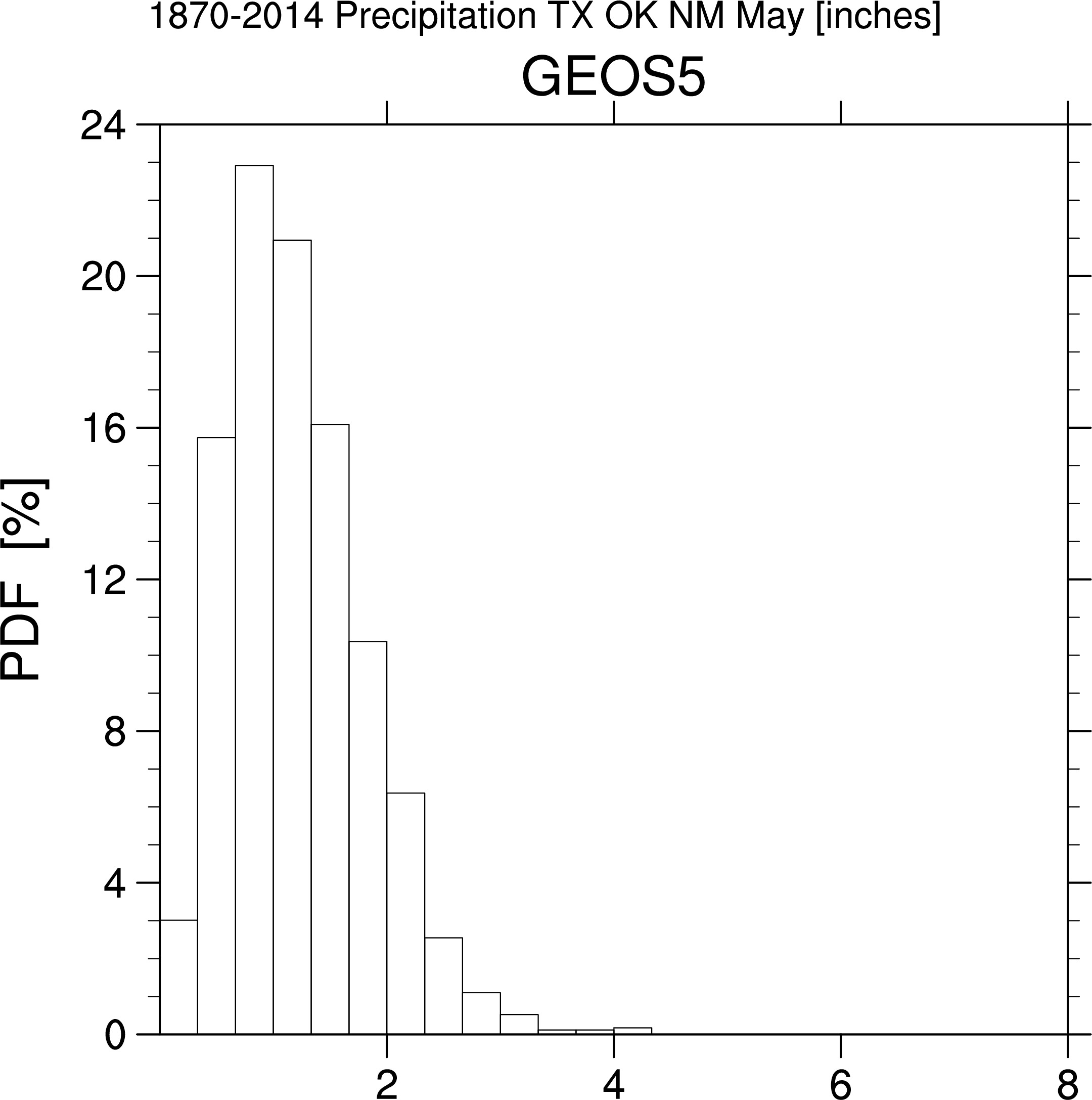





Climatologies:









Time Series








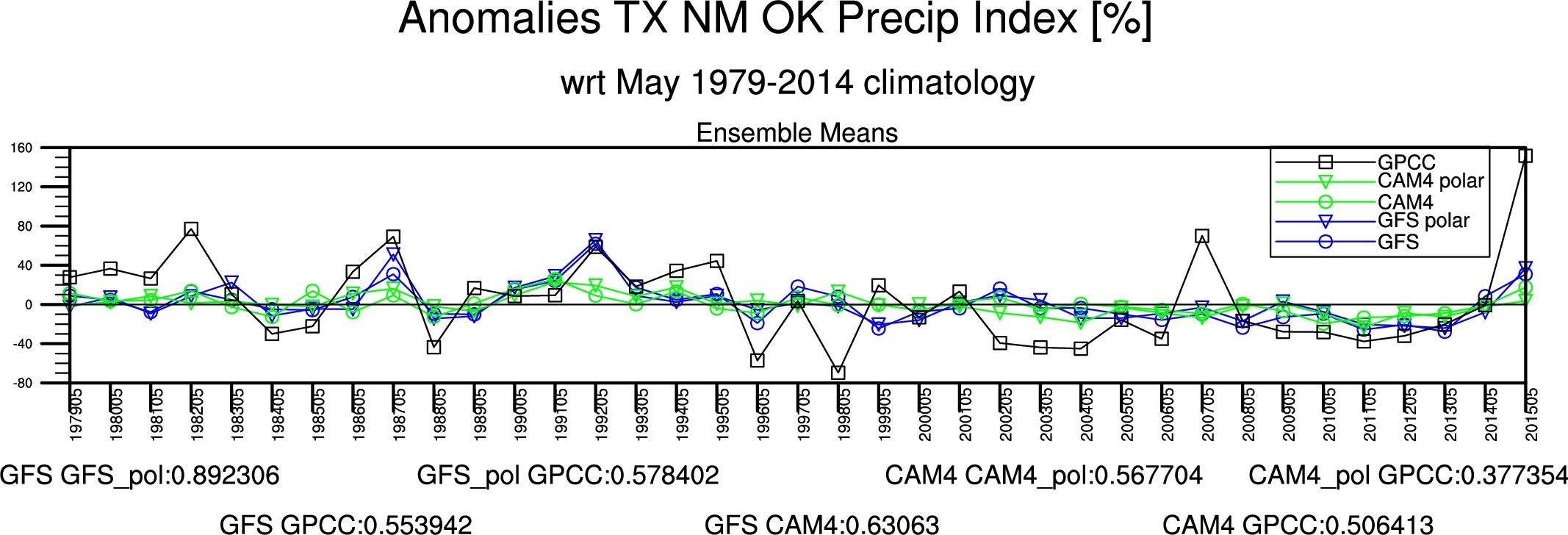
Above numbers are correlations of time series.
Correlations:

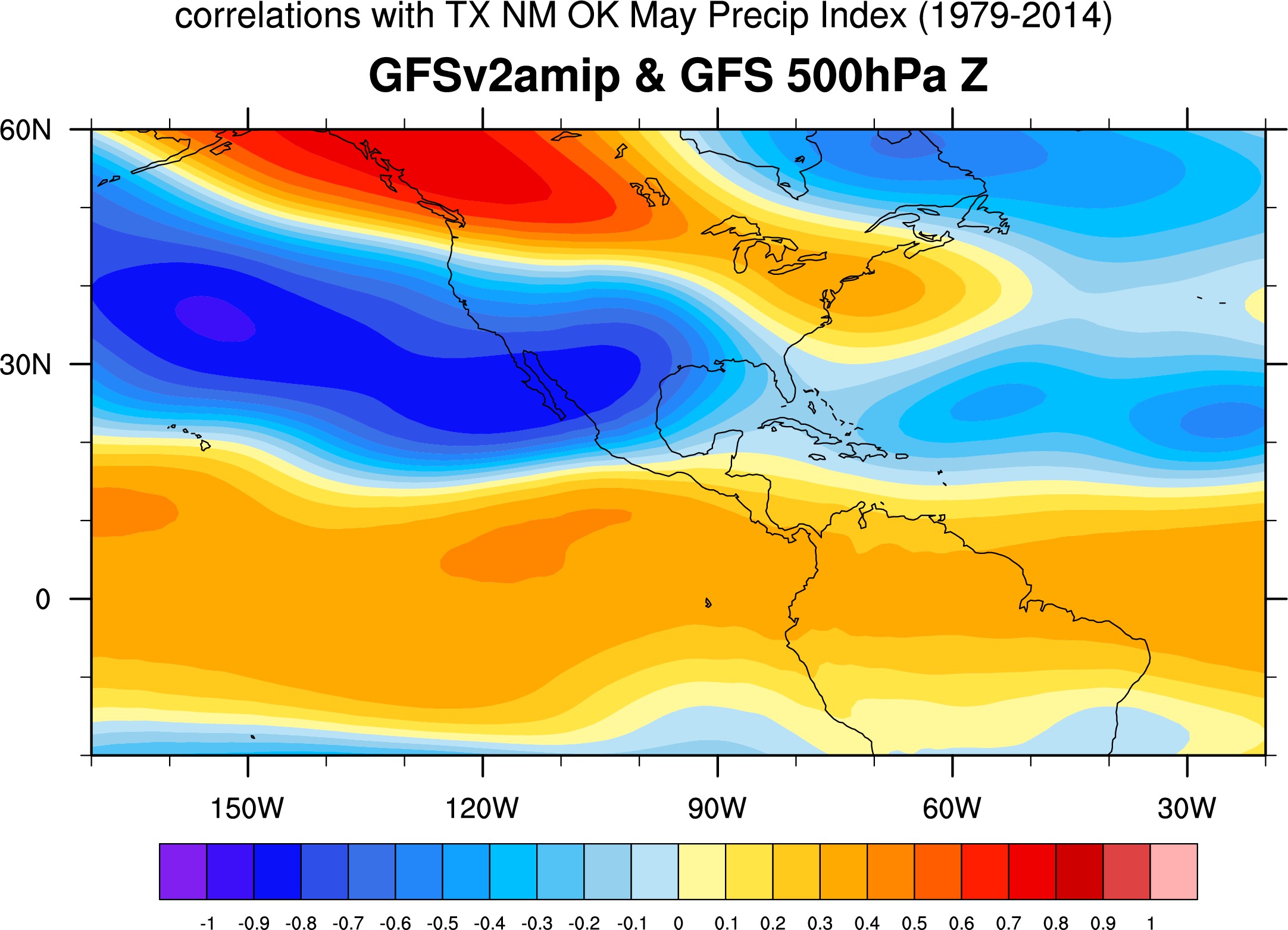


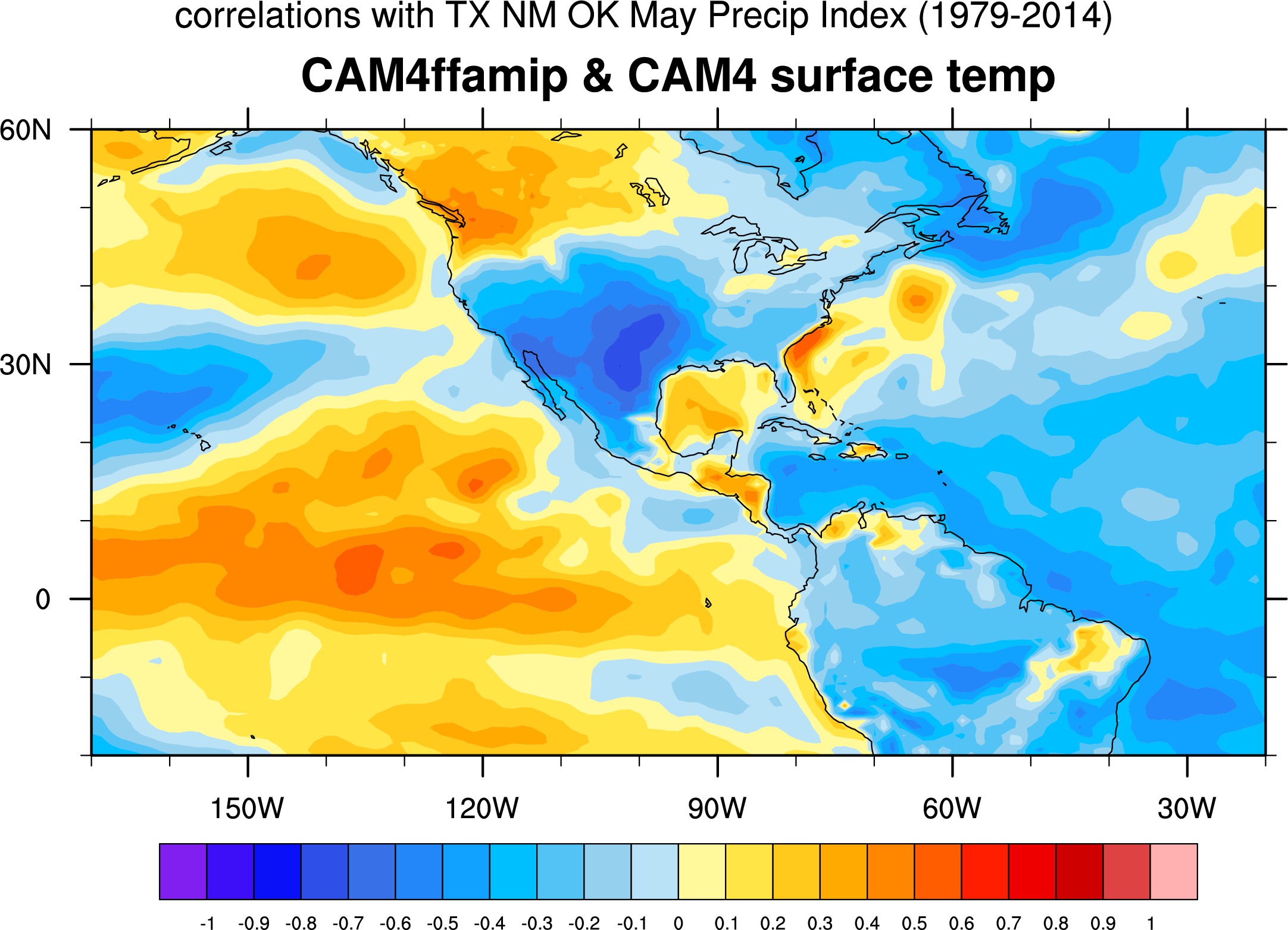

Observations:




The above analyses did not involve detrending.
Observations
Anomaly Maps


GPCC Data
2015 monthly

















GPCC monthly precip data from Jon Eischeid.
CFSv2 AMIP Data
2015 monthly

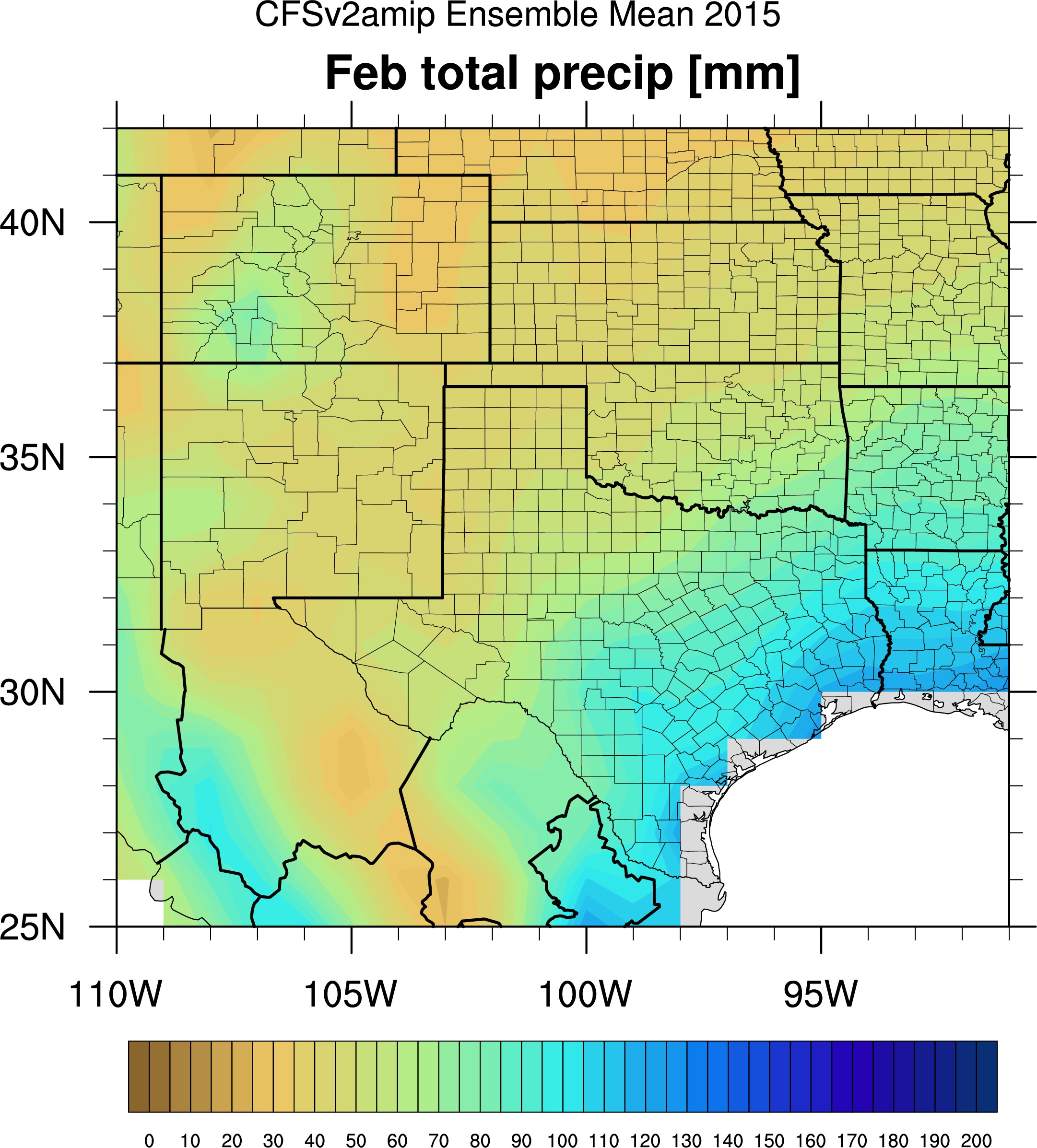



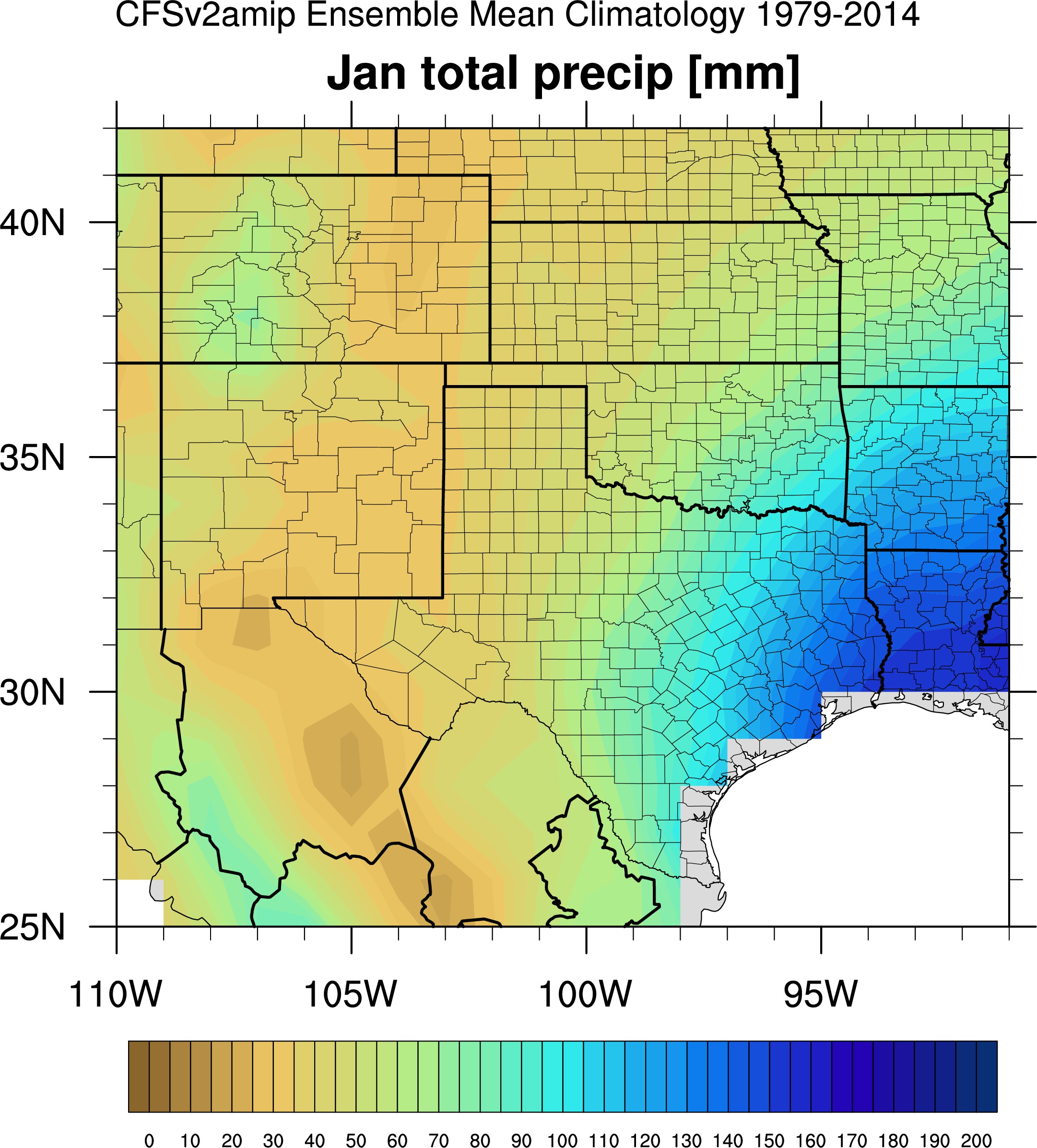
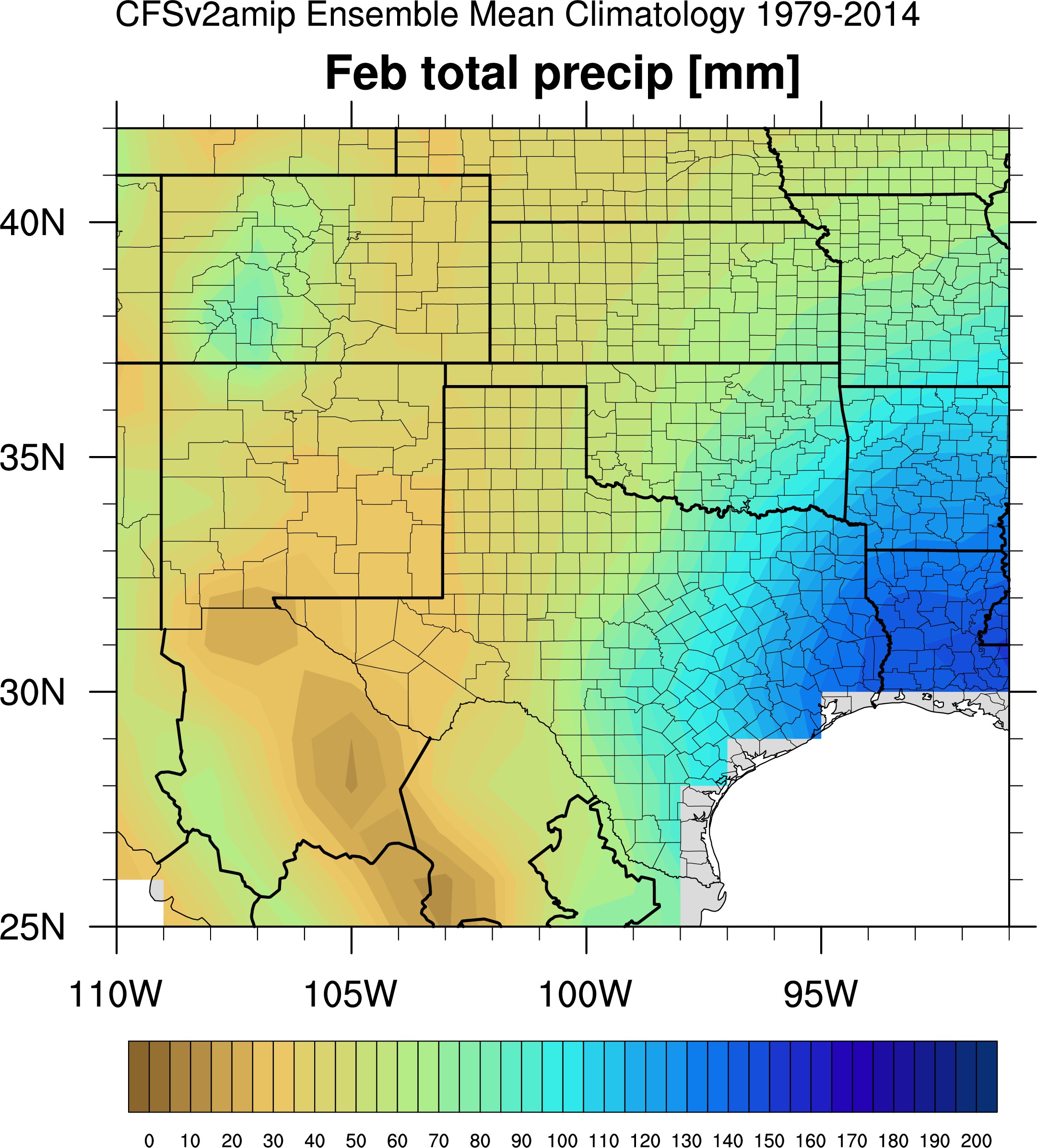



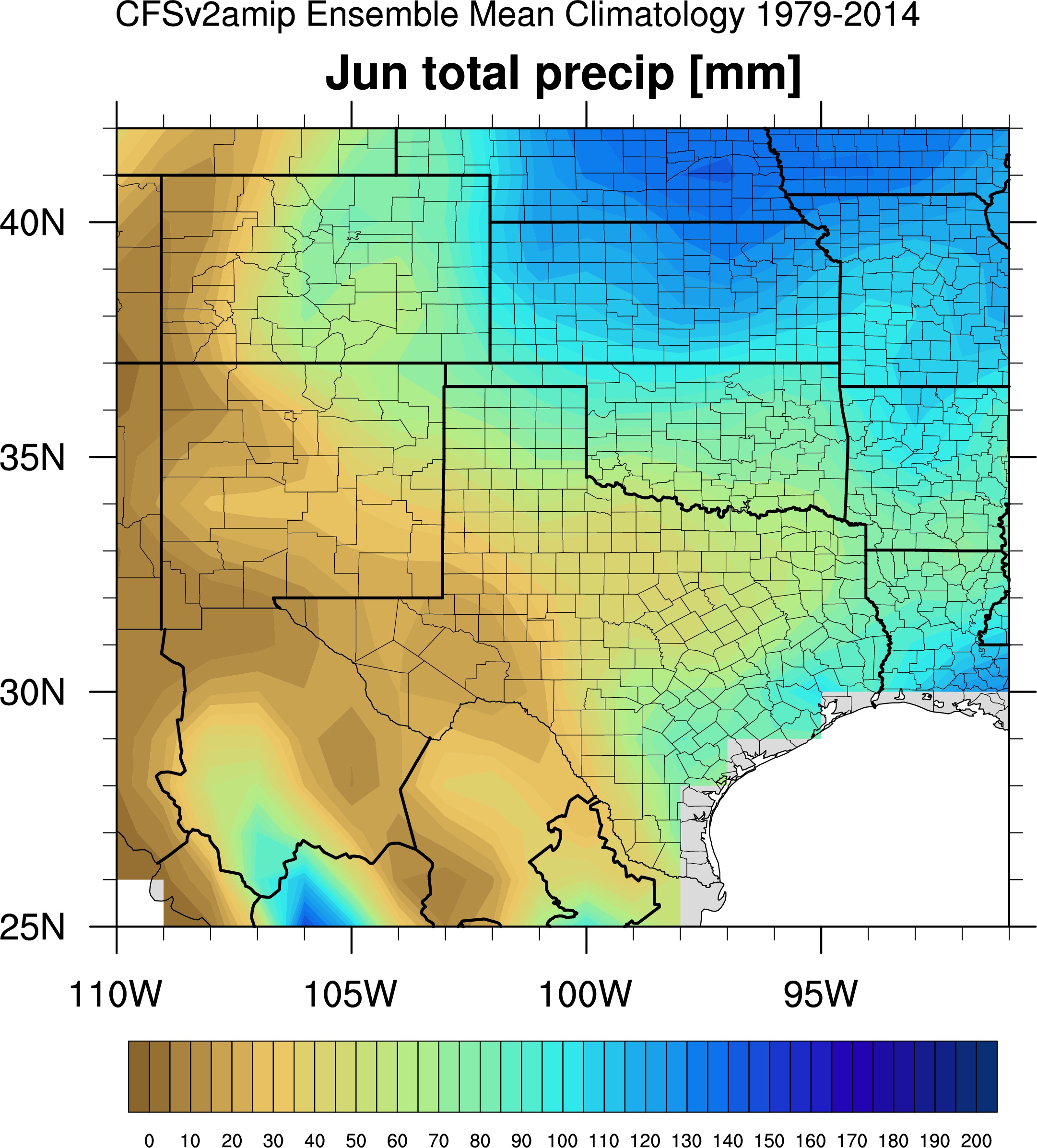






CFSv2 AMIP monthly precipitation data from Tao Zhang
Observations May 2015
Daily Precipitation









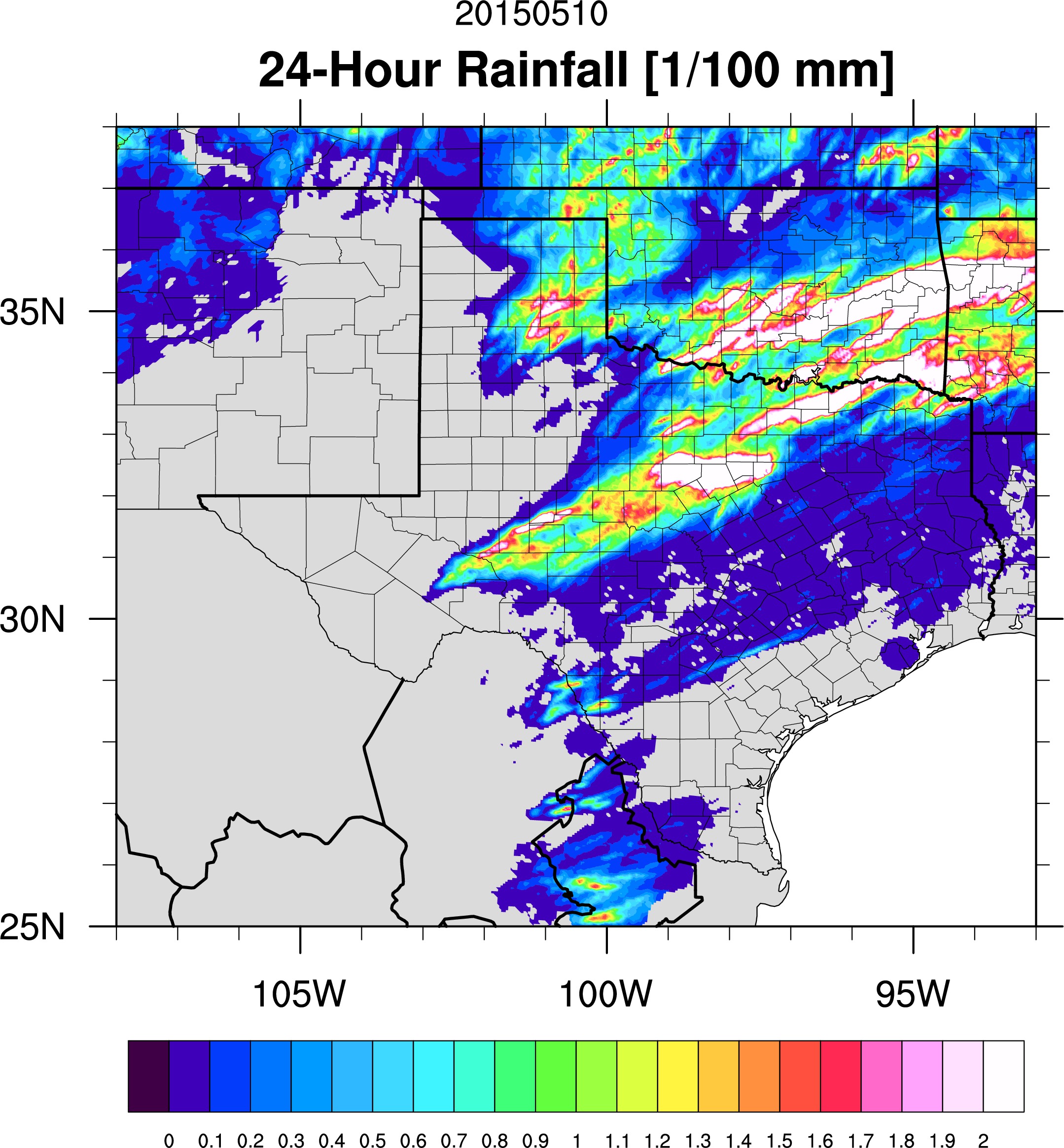















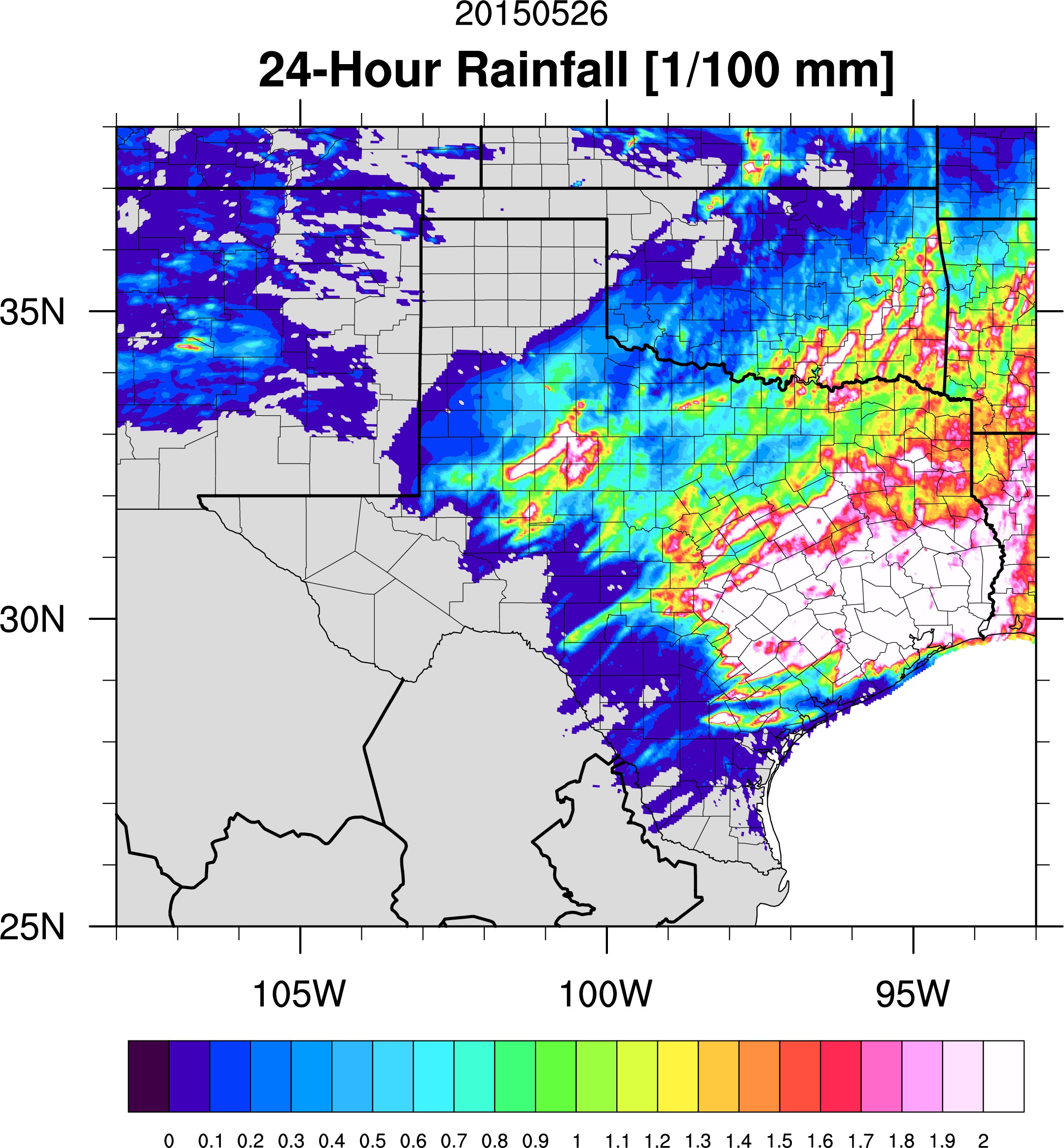
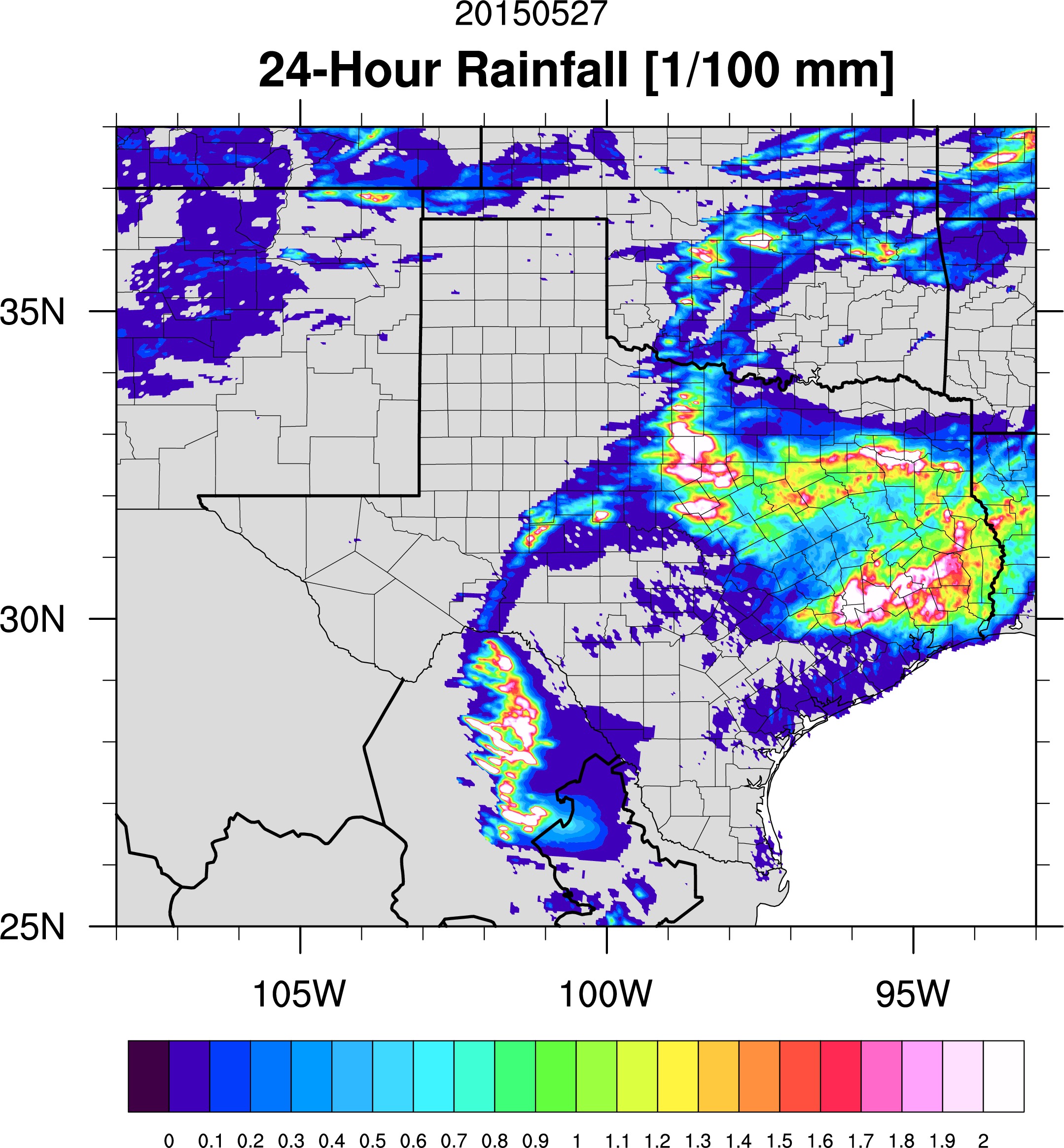




CONUS Daily data from NWS Advanced Hydrologic Prediction Service
Related Fields Reanalysis Data
Daily Precipitable Water











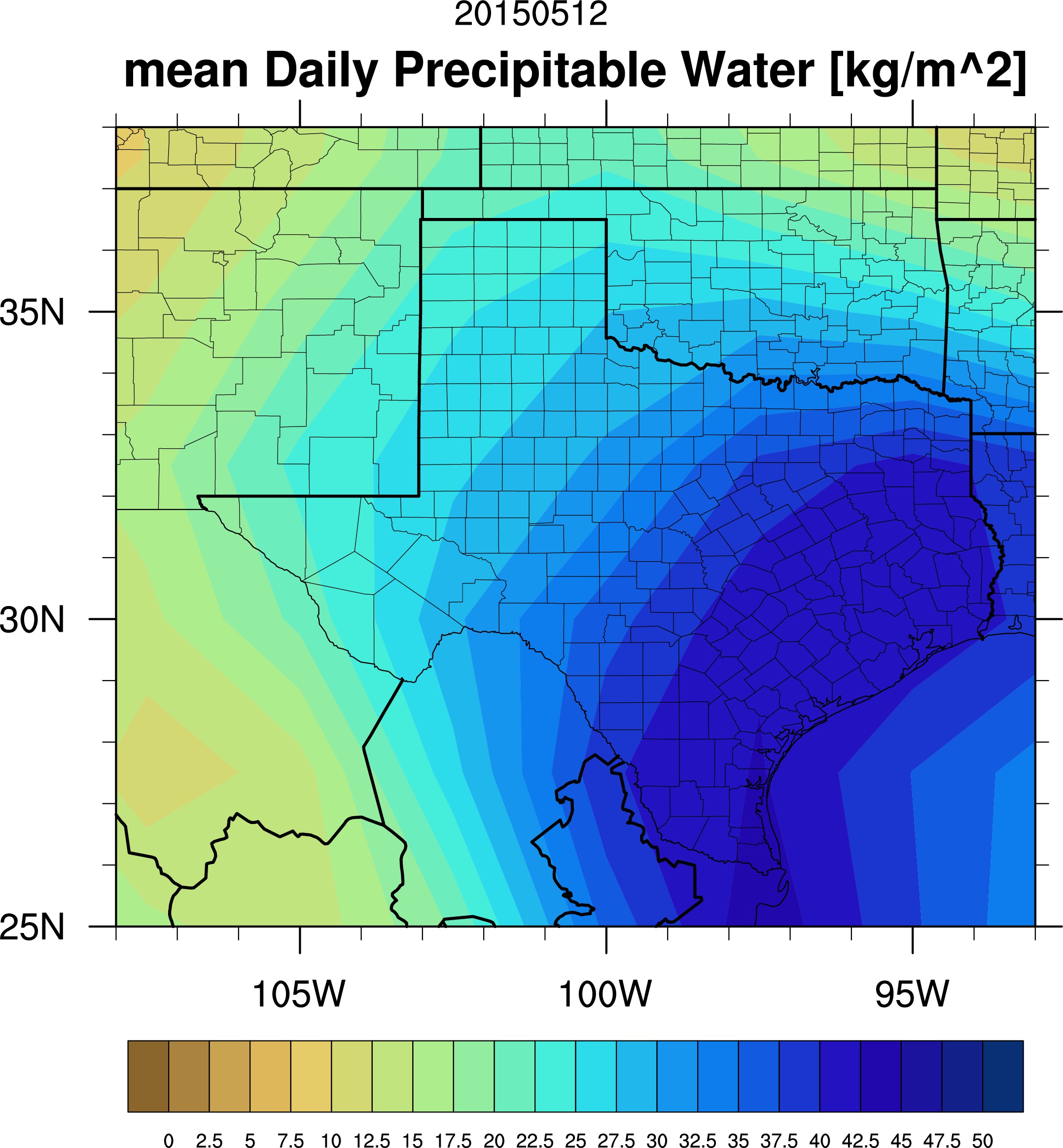














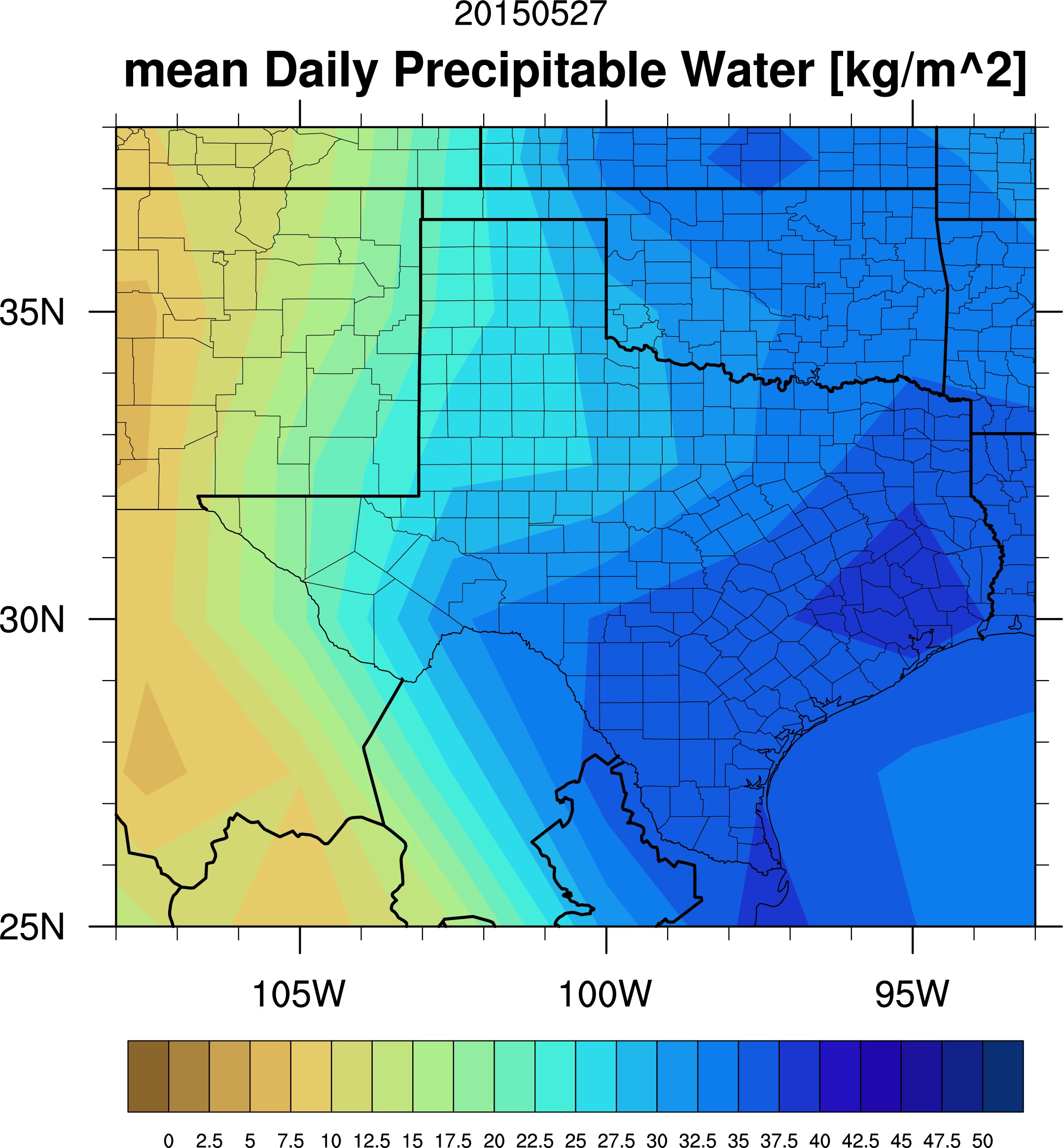



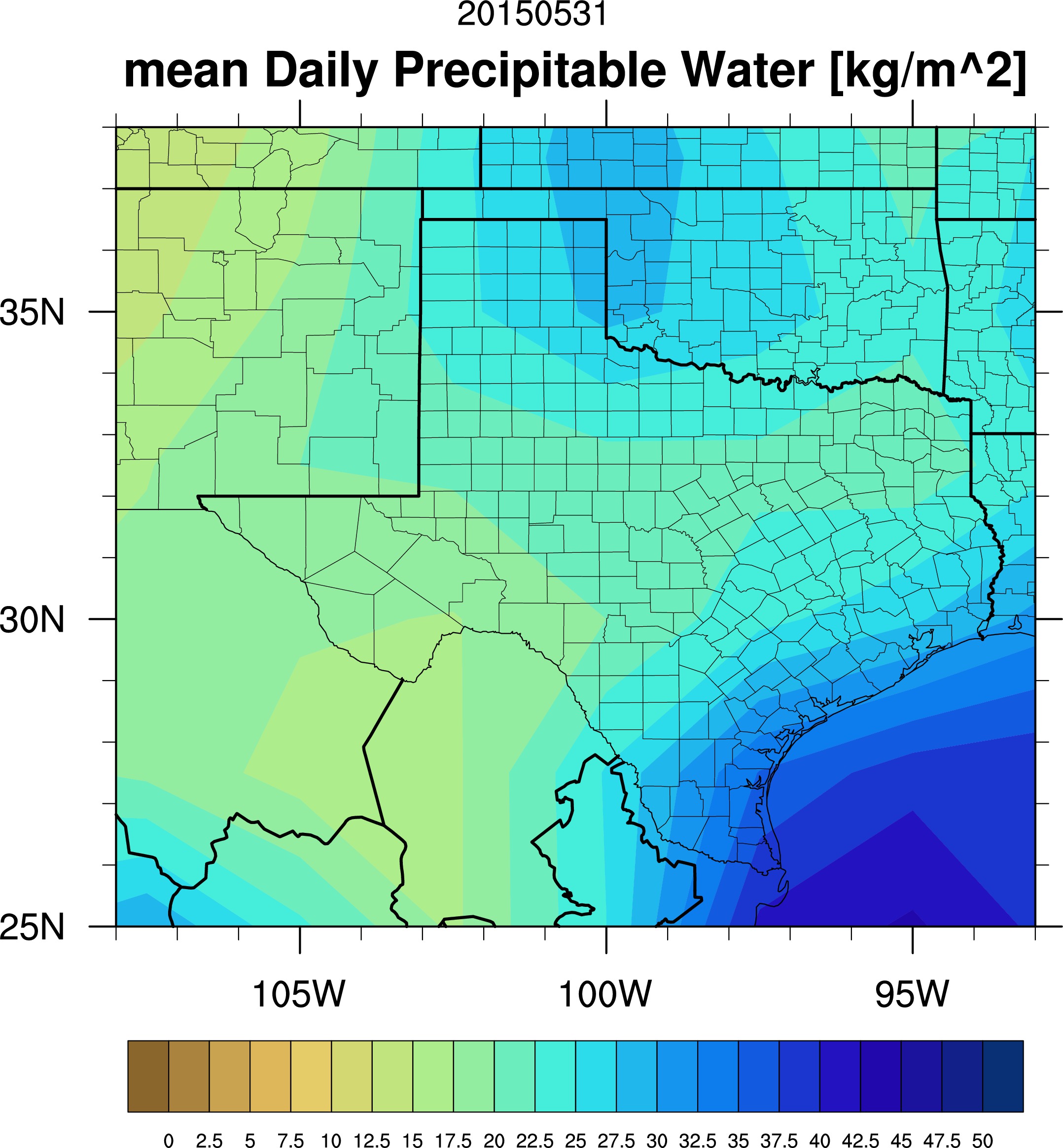
Daily data from NCEP/NCAR Reanalysis
Daily U-Wind








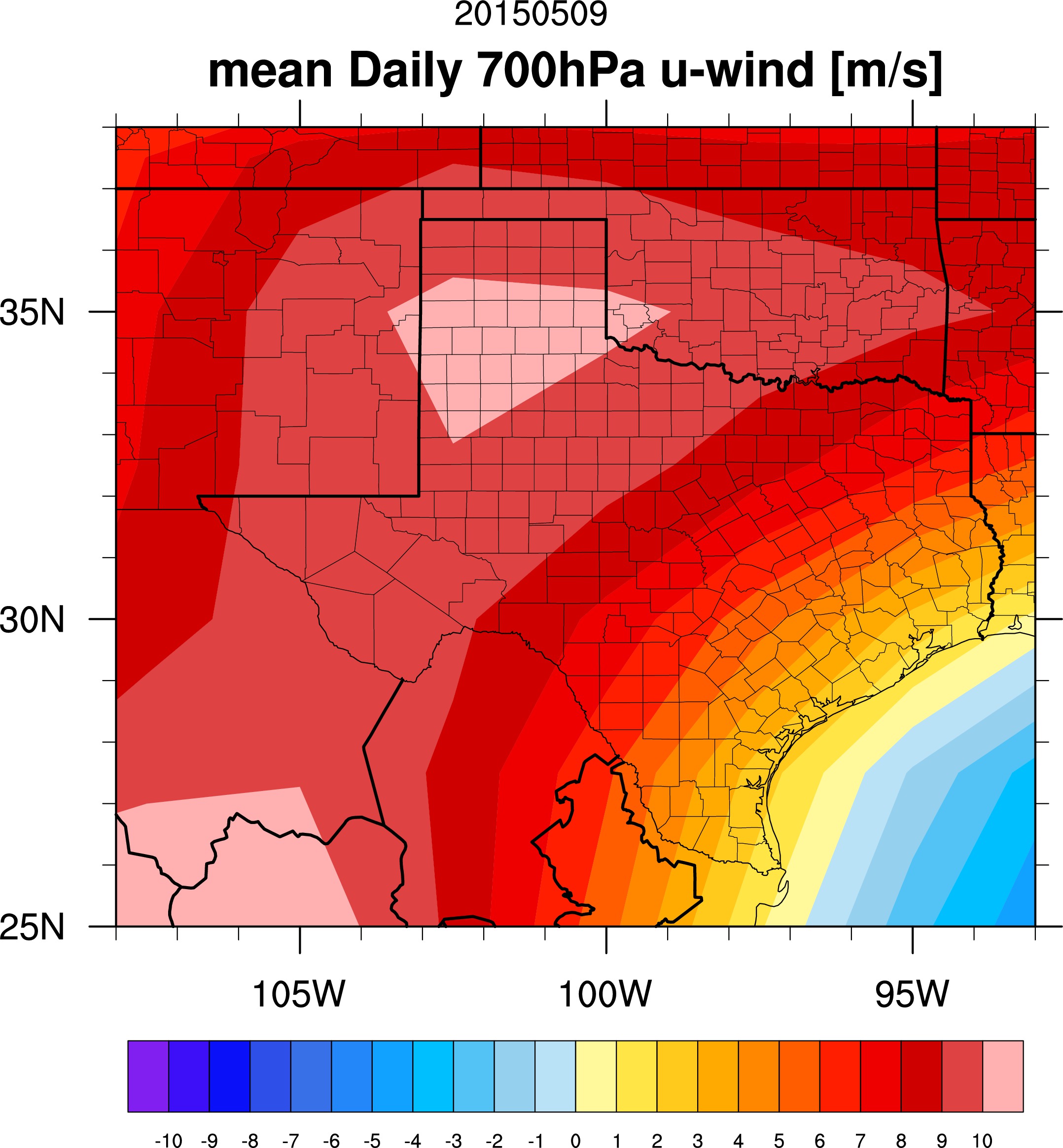
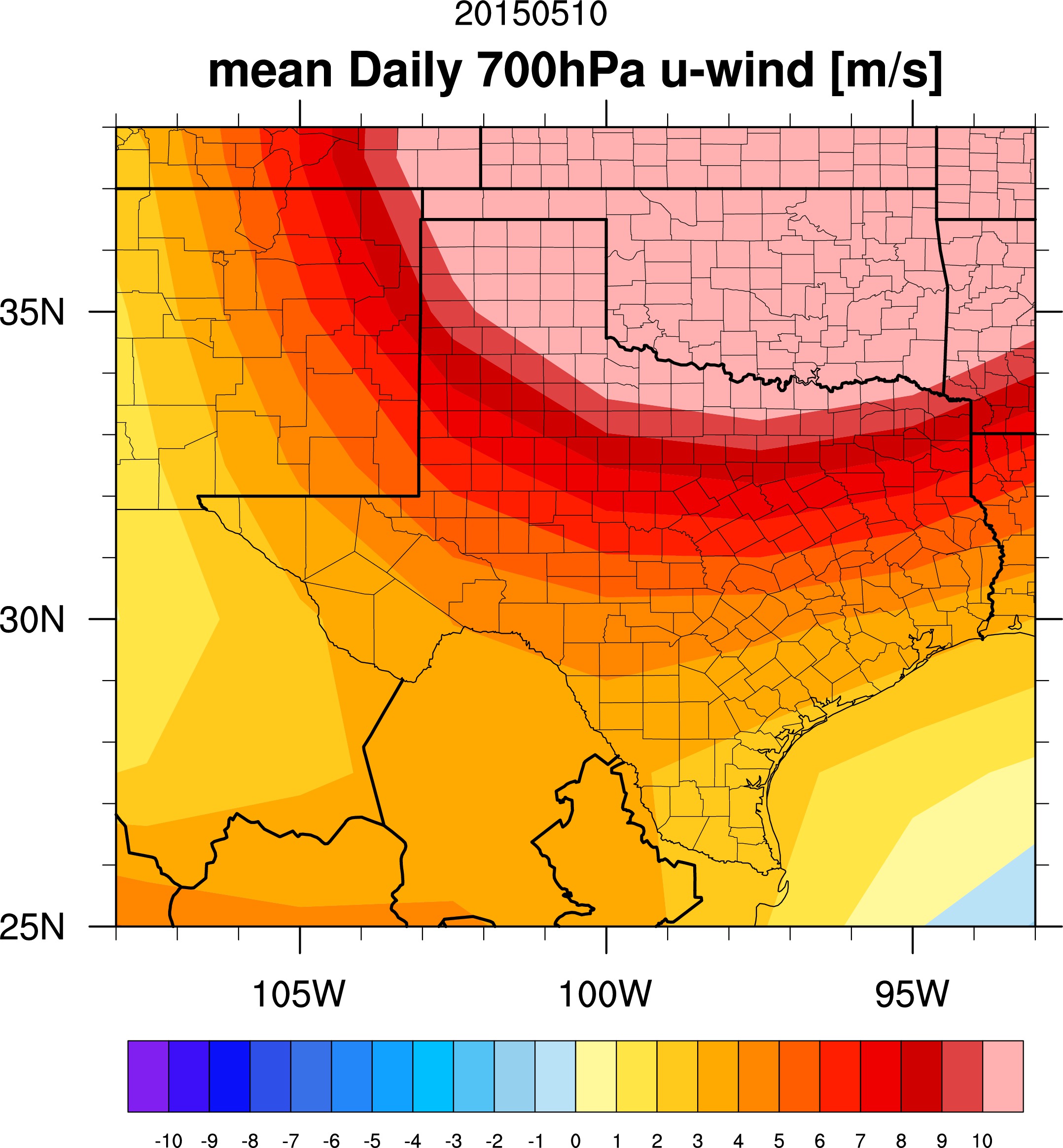




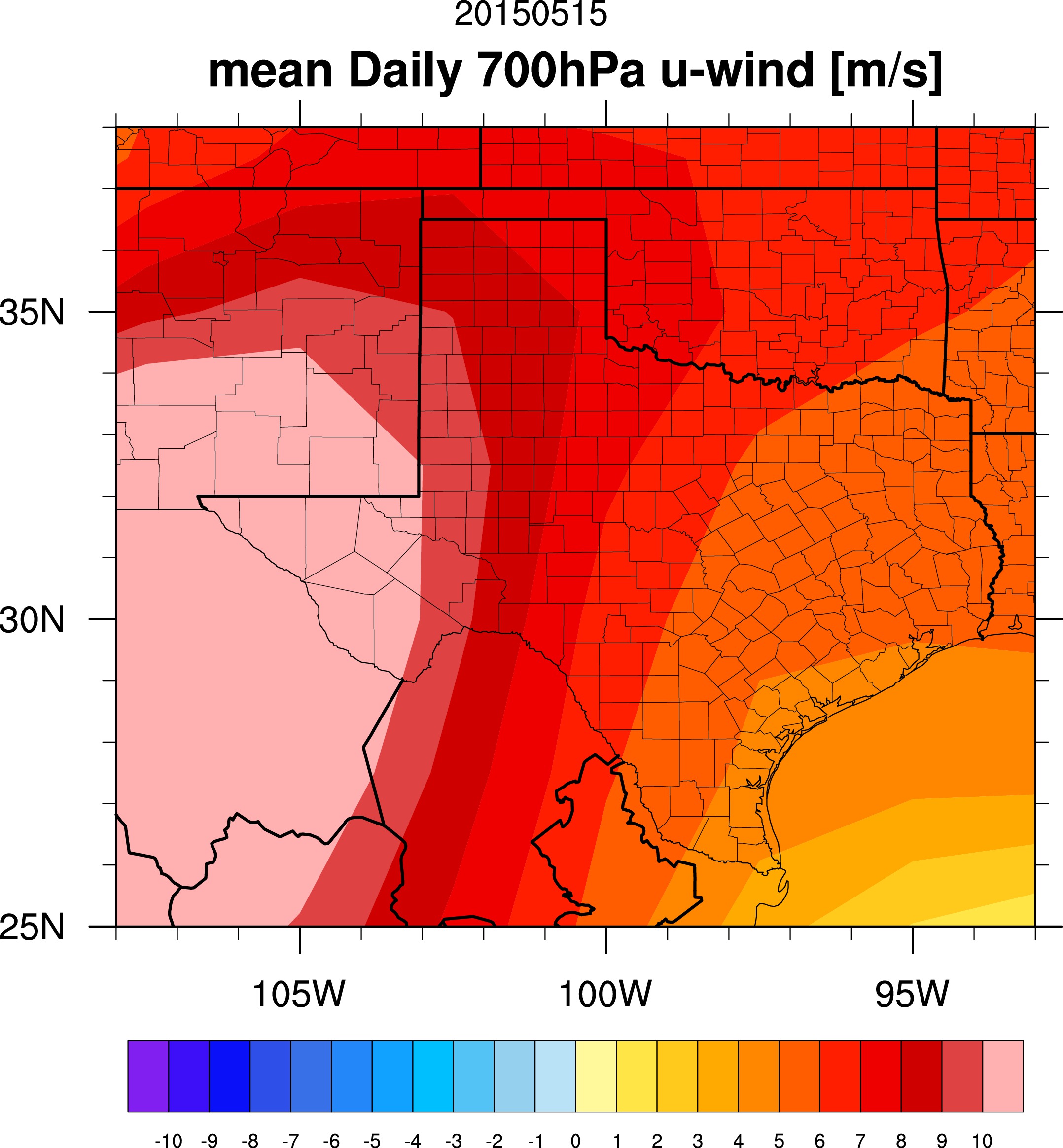













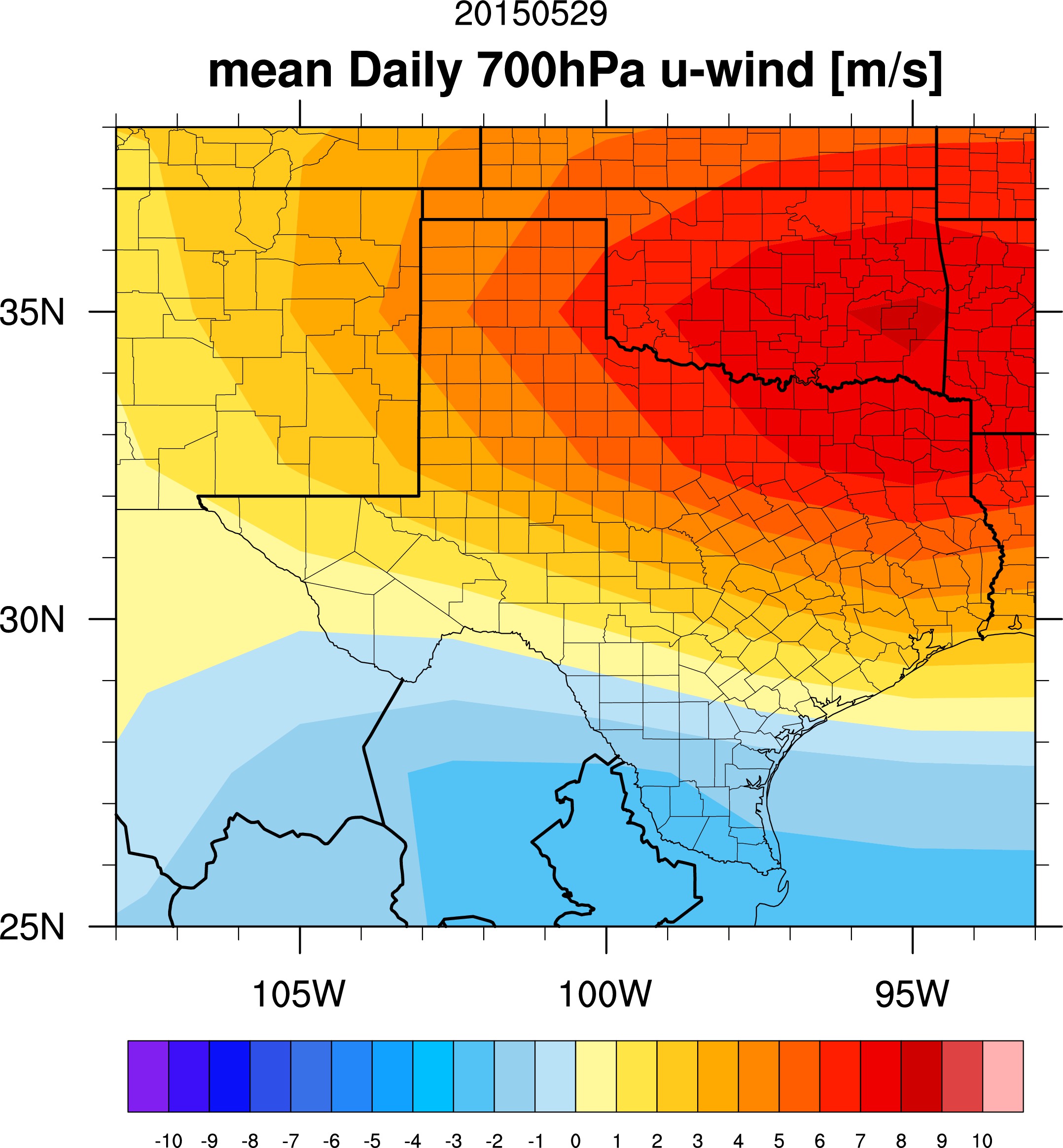

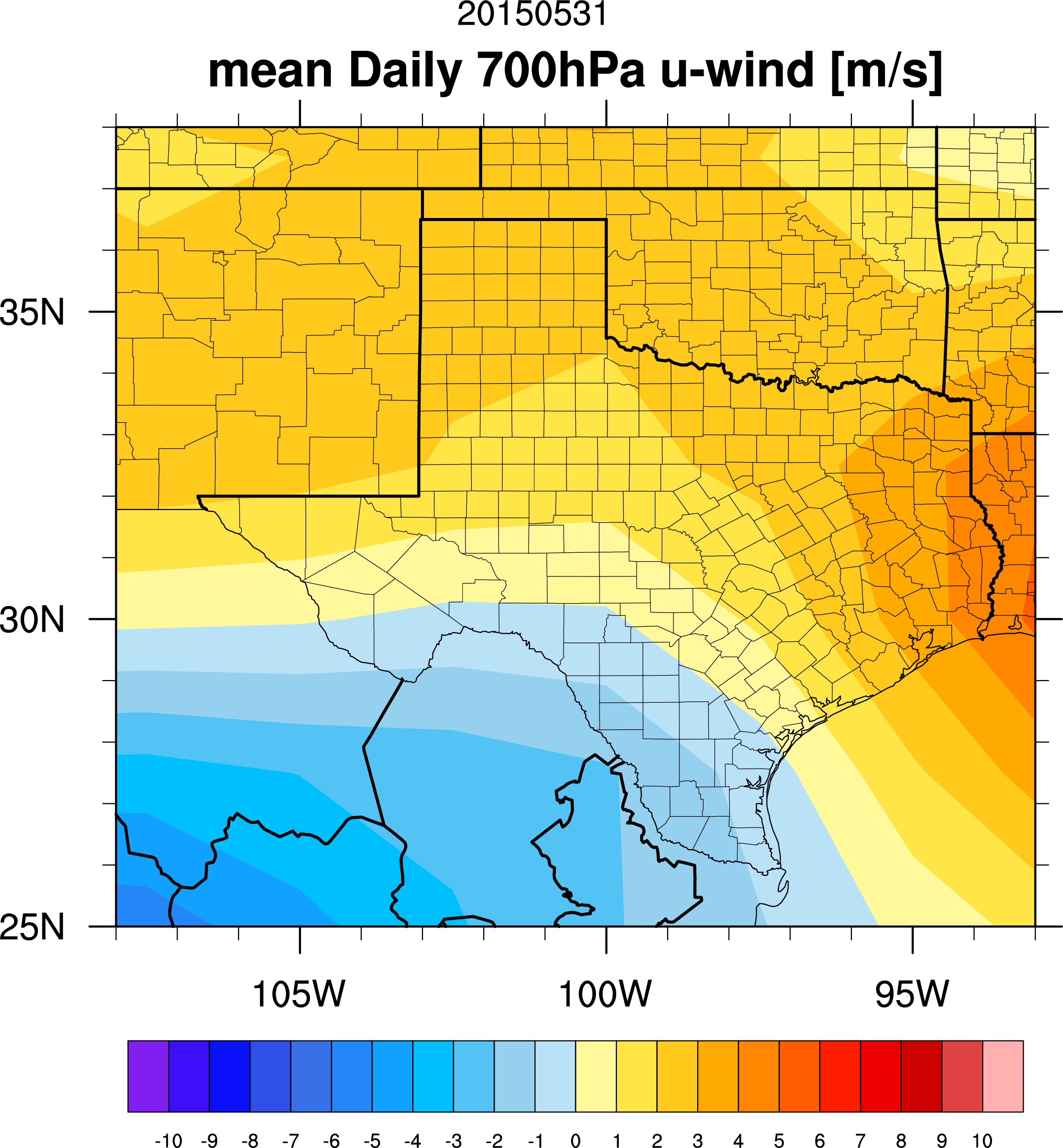
Daily data from NCEP/NCAR Reanalysis
Daily V-Wind











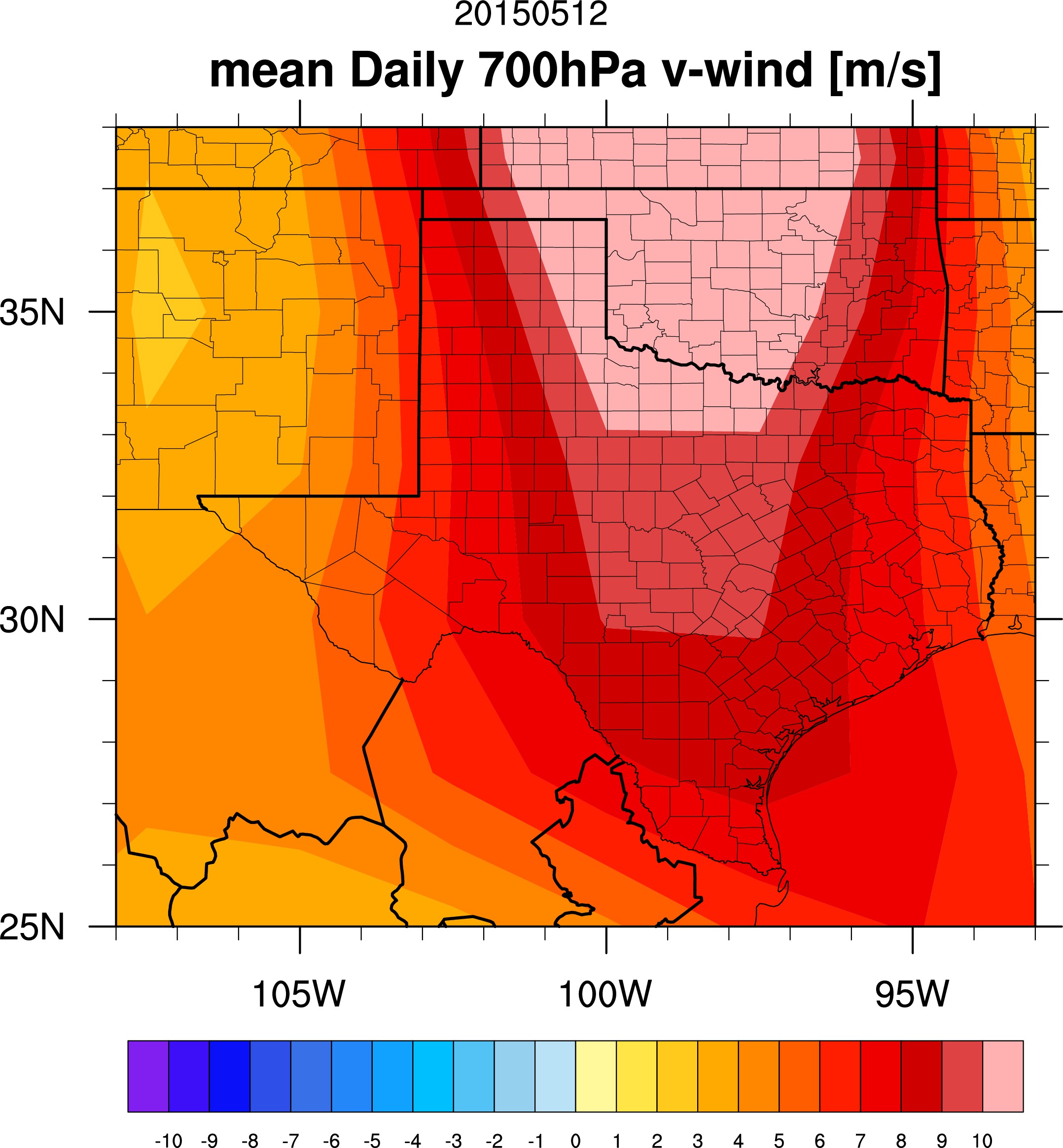


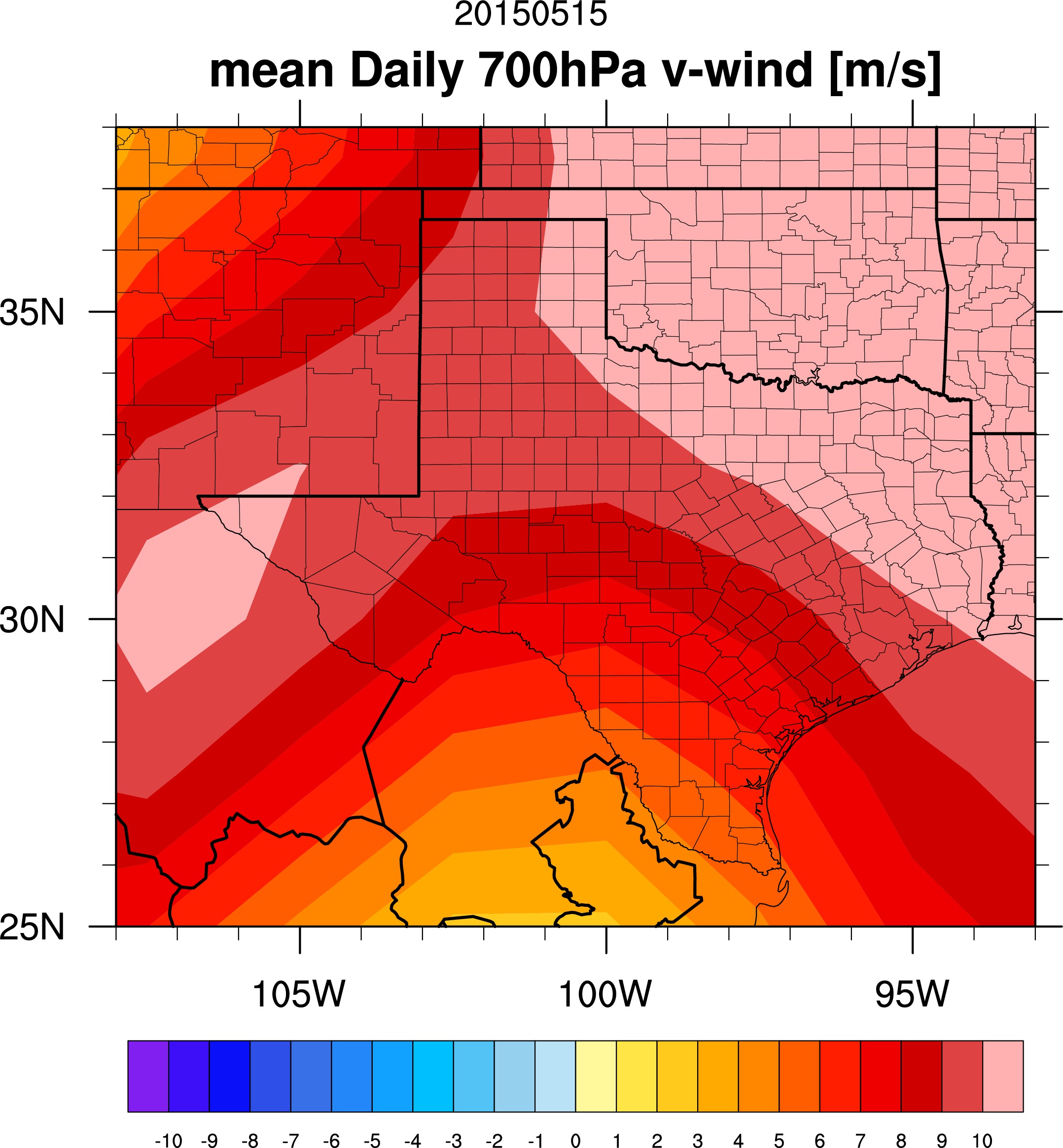







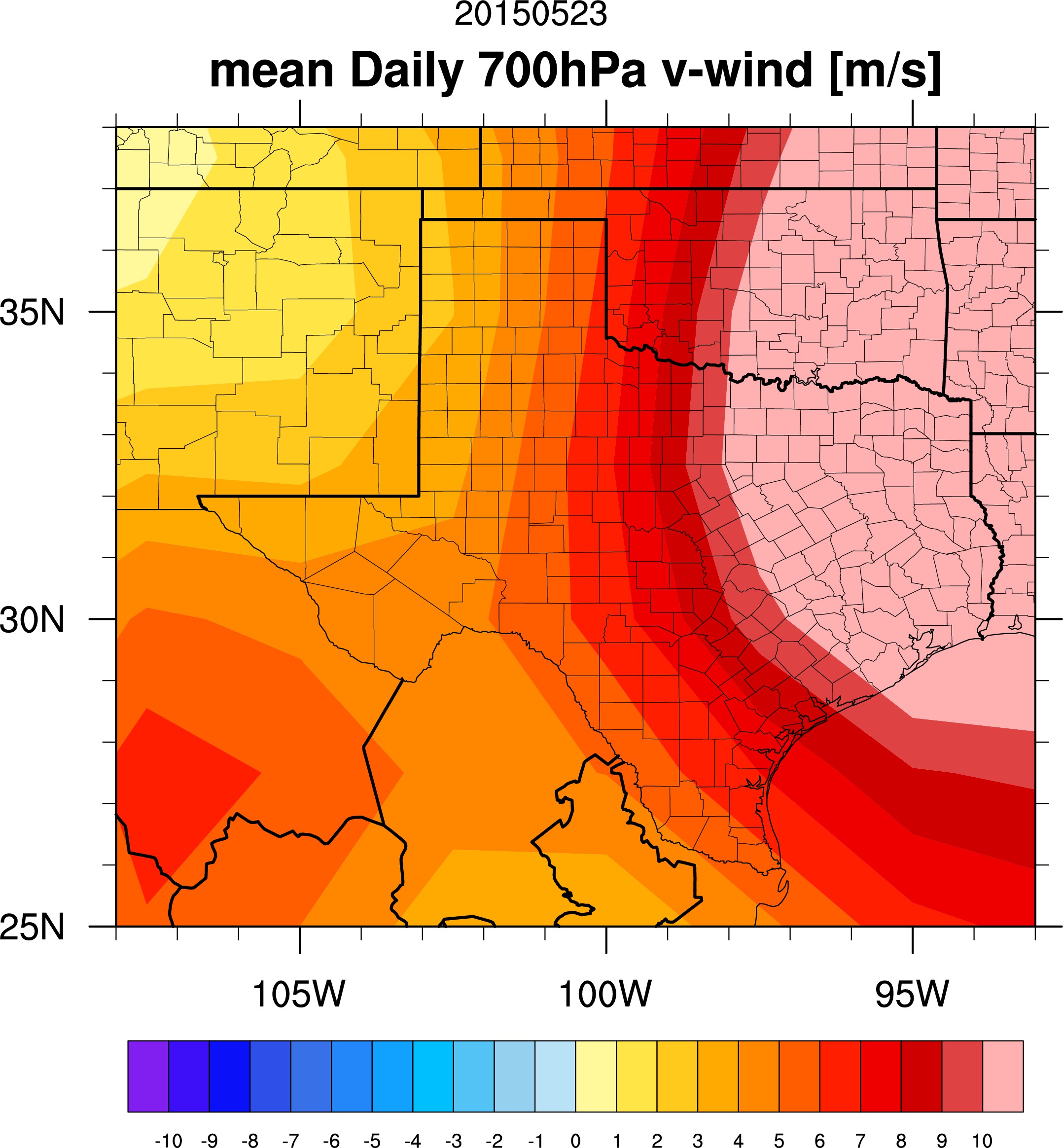








Daily data from NCEP/NCAR Reanalysis
Observations
Mean Precipitation by season:

Mean precipitation:
